The North Cape Line – Roundtrip
Oslo - Honningsvåg - Oslo
All-inclusive winter cruise to Norway’s North Cape, chasing the Northern Lights
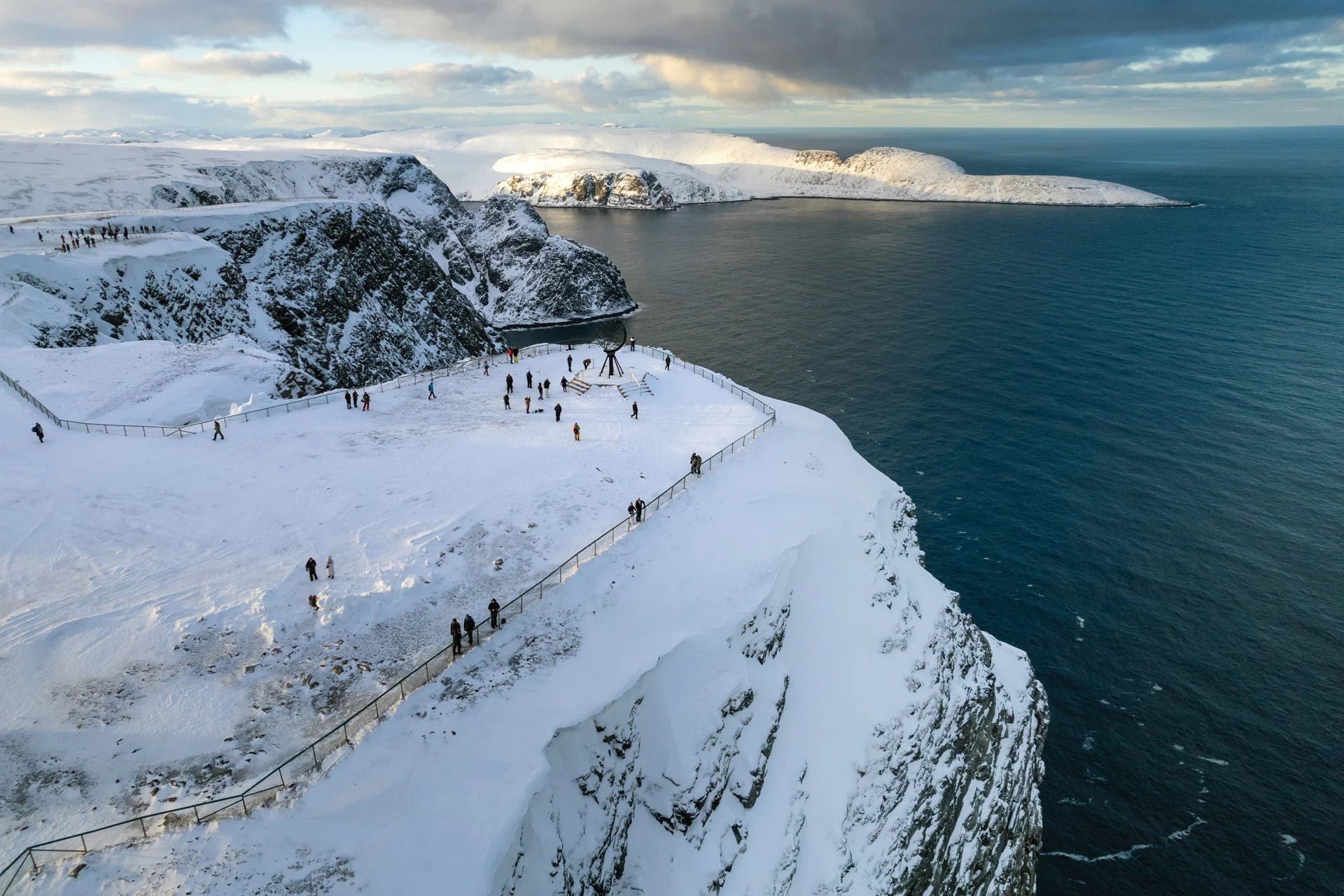
1 / 11
Cruise from Oslo to Norway’s North Cape on this all-inclusive winter voyage under the dancing Northern Lights
Experience beautiful Norway in winter with more time to explore handpicked ports like Narvik, Alta and Tromsø. Cross into the Arctic Circle and watch the dark winter skies as the Northern Lights cast their magical glow over fjords, mountains and fishing villages.
Embark from vibrant Oslo
Journey from Norway's beautiful, historic, fjord-side capital
Cruise through Norway’s epic natural beauty
Discover iconic towns, fjords and fishing villages along the way
Discover the charming port of Kristiansand
Explore Norway’s southernmost city, with its wonderful architecture
Sail along Norway’s stunning southern coast
See the iconic Lindesnes Lighthouse, Norway’s southernmost point
All-inclusive Signature voyage
Enjoy longer stays in port, and superb dining in multiple restaurants with unlimited selected drinks
pp
All meals & unlimited selected drinks included
Lowest rate - Sailing December 2025
15 days
13 Stops
44 Departures

If the aurora doesn't occur within sight of the ship on your 11+ day voyage, enjoy a free 6- or 7-day trip. Offer valid for departures from 20 Sep to 31 Mar.
Itinerary
Show full itinerary
Discovering Norway’s capital
Oslo
Read more

Settle in at sea
Read more

Stavanger’s old-world charm
Stavanger
Read more
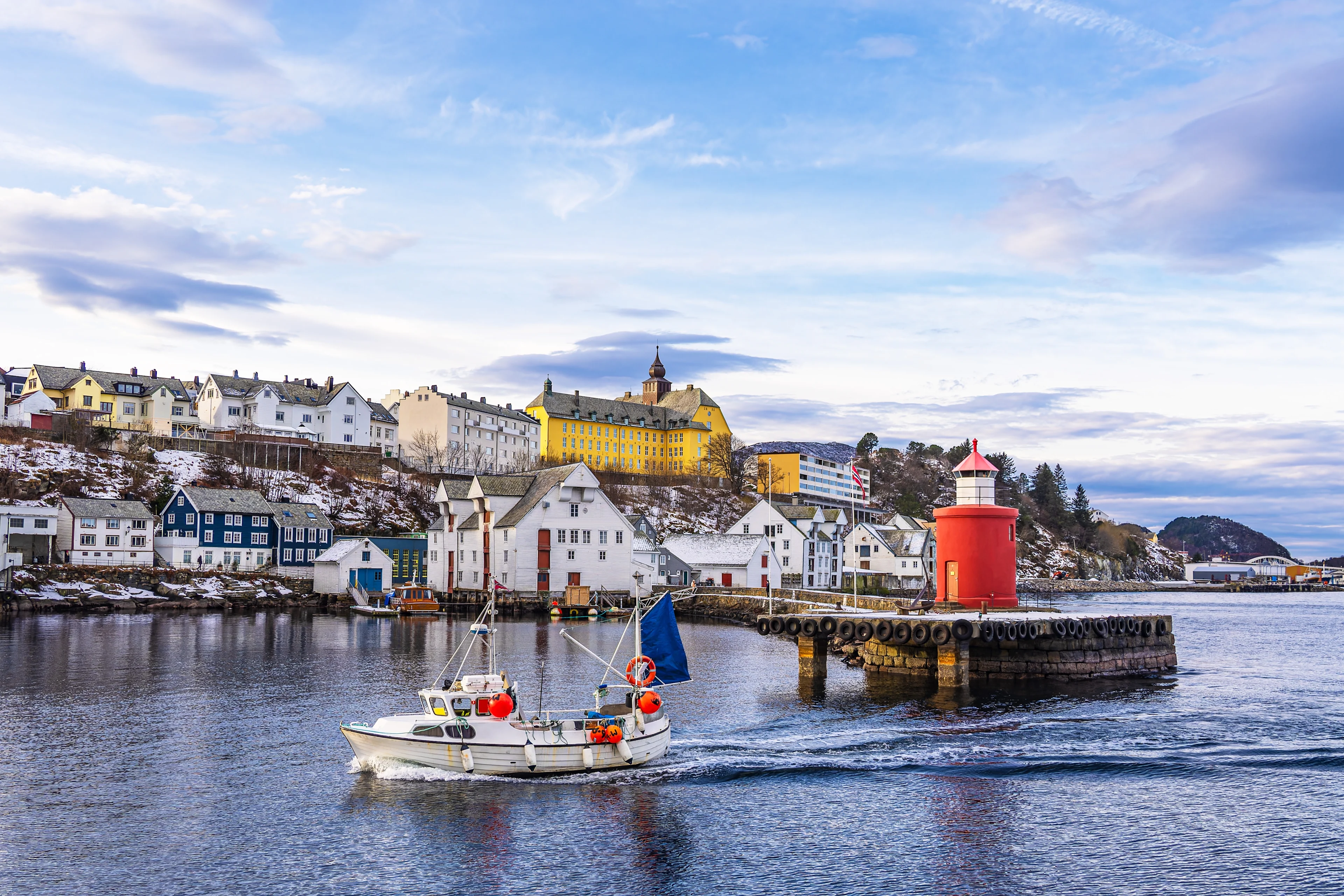
A picturesque town
Ålesund
Read more
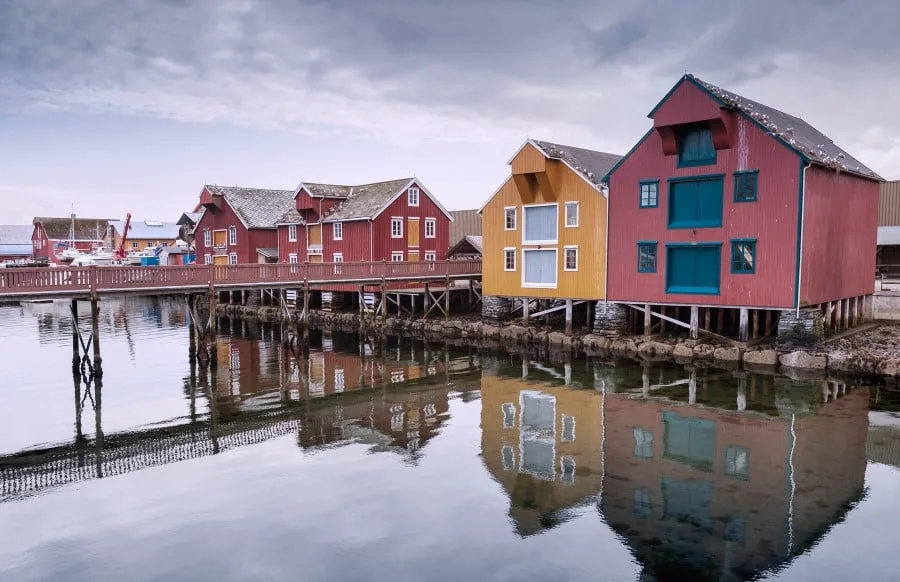
An ancient fishing town
Rørvik
Read more
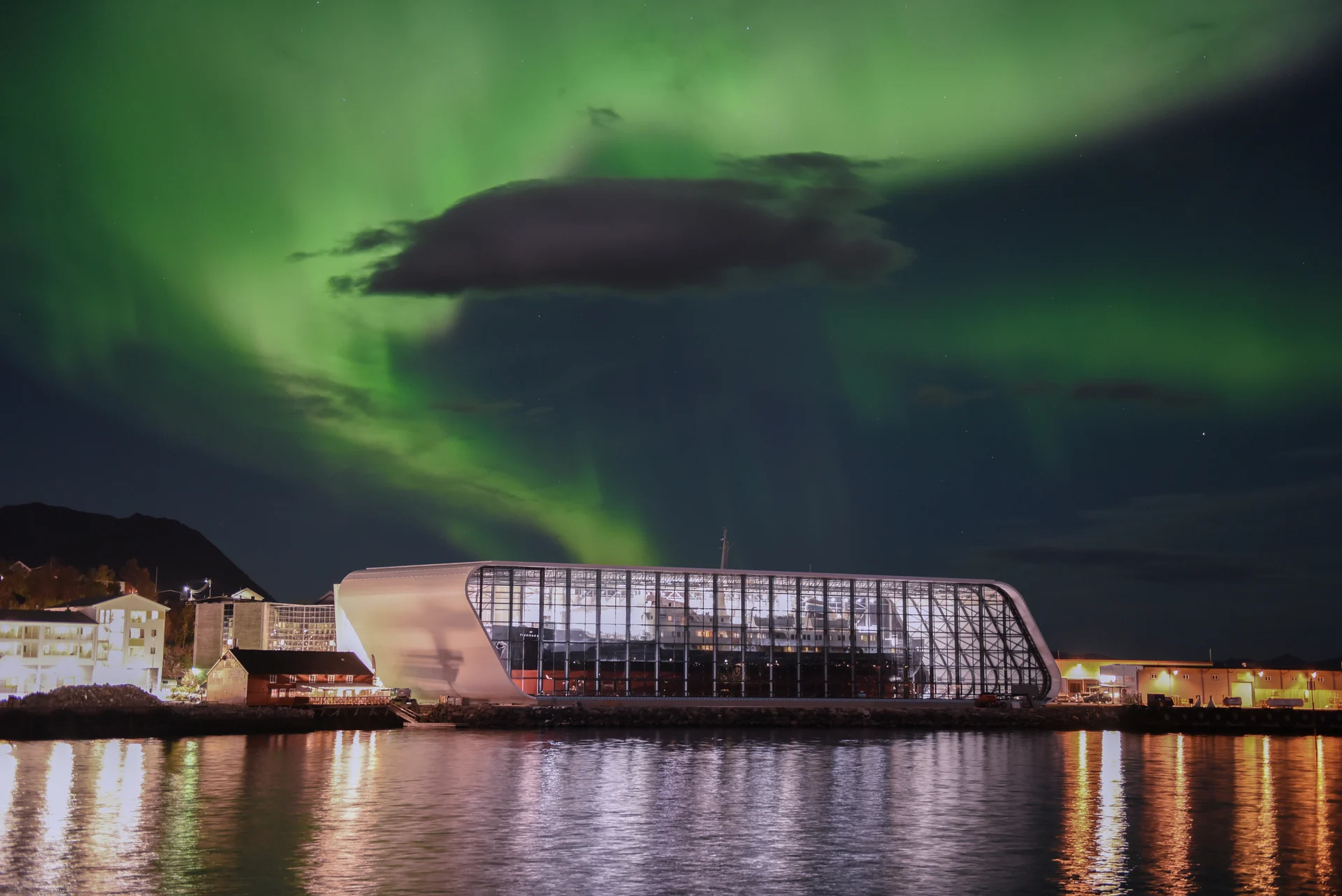
Lofoten islands and our historic birthplace
Svolvær
Read more

The gateway to the Arctic
Tromsø
Read more

The northernmost point
Honningsvåg
Read more

The city of Northern Lights
Alta
Read more
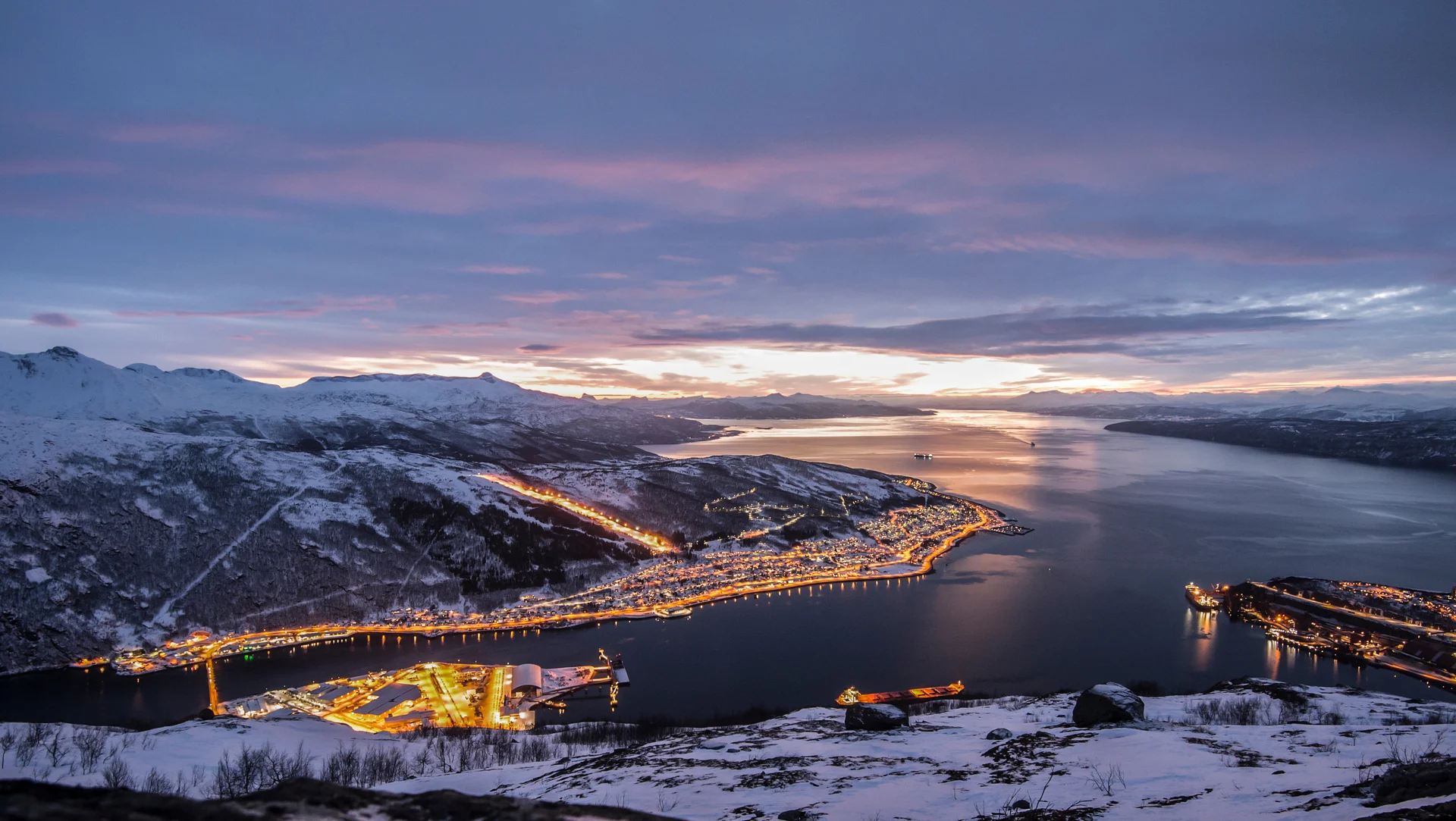
Arctic beauty awaits
Narvik
Read more
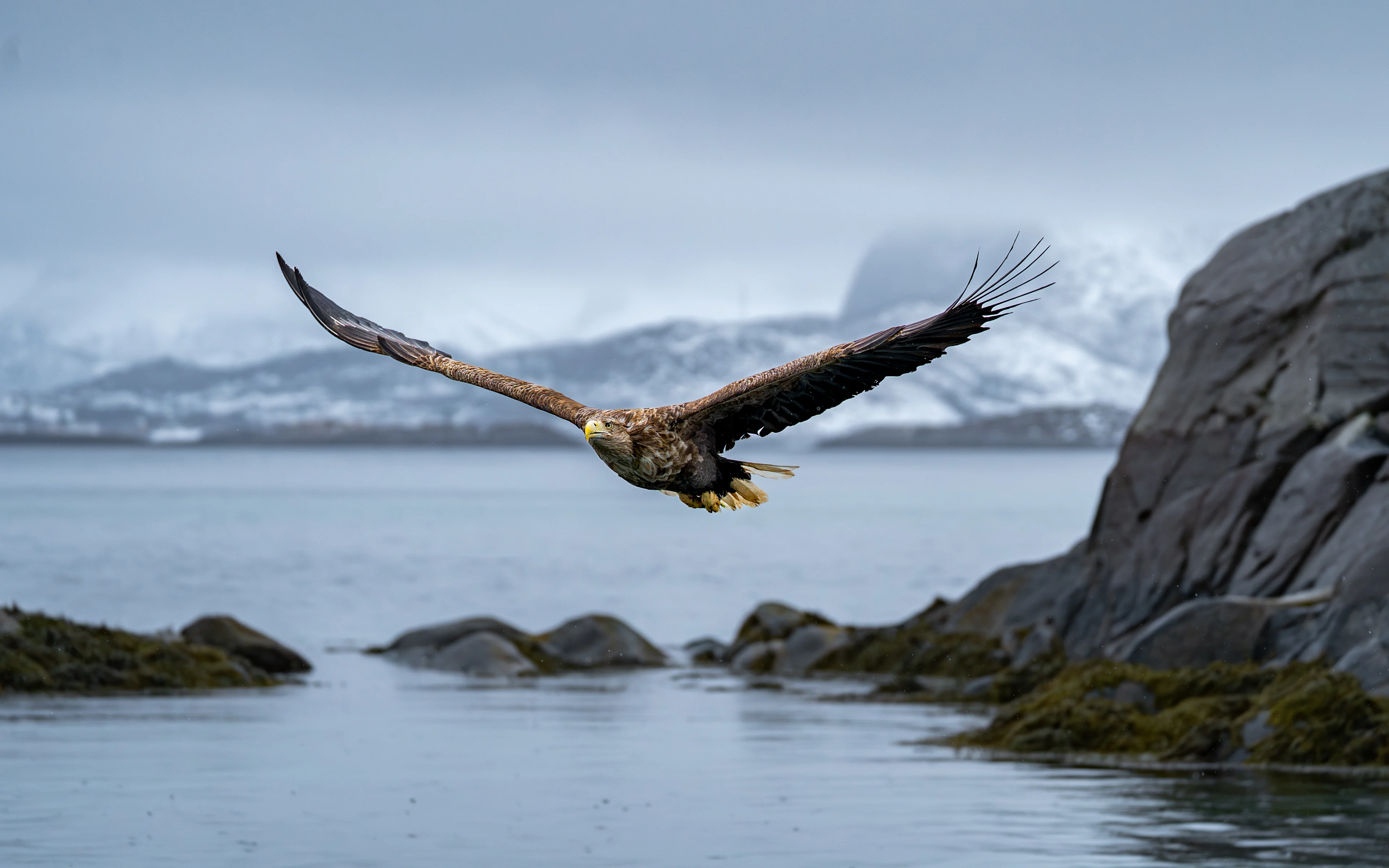
Cruise the inner coastal route
Read more
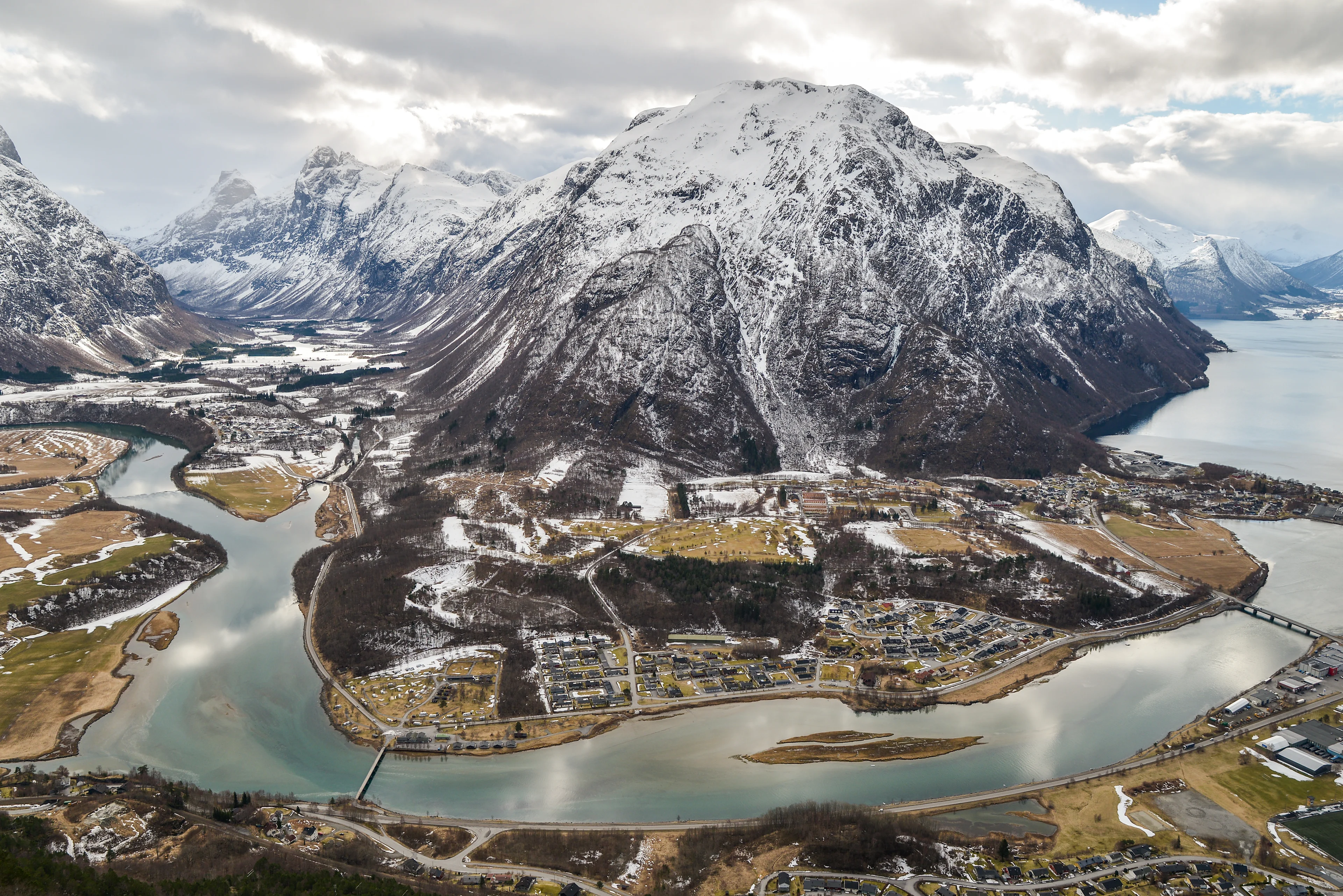
Alpine village by the fjord
Åndalsnes
Read more
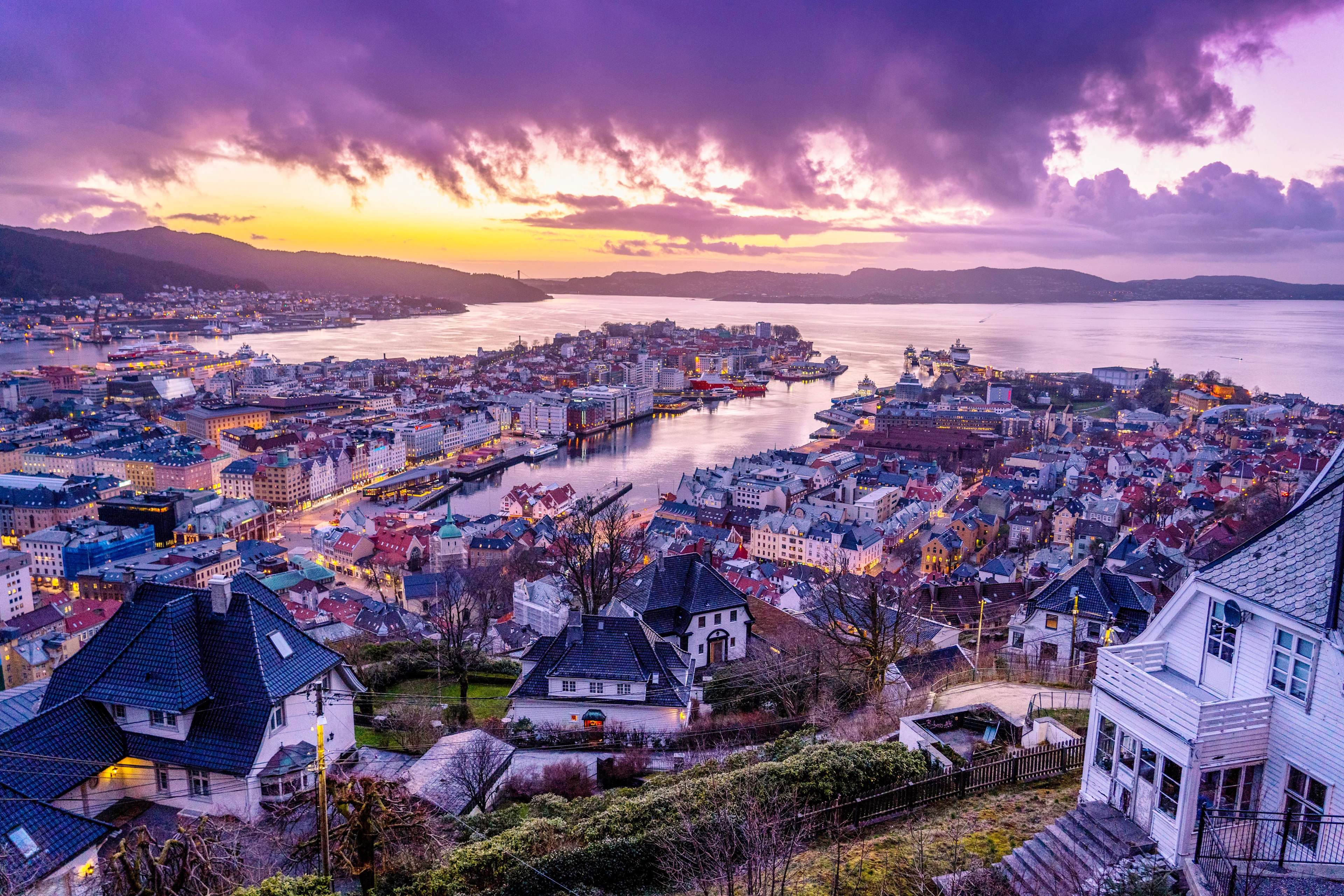
Beautiful Bergen
Bergen
Read more
The city of lighthouses
Kristiansand
Read more

Back where we began
Oslo
Read more

Discovering Norway’s capital
- Port: Oslo
- Day of voyage: 1
Details
Welcome to Norway. First stop: Norway’s thriving capital, Oslo.
If you have time before you board your ship for the voyage ahead, you’ll want to explore the many charms this cosmopolitan capital has to offer. Make your way to the city centre, where you can take snaps of the architecturally distinct Rådhuset town hall, Royal Palace, and Oslo Cathedral.
As afternoon turns towards evening, board your ship. Once we’ve welcomed you and you’ve settled into your cabin or suite, you’ll meet your Expedition Team. You’ll get to know each member of the team as they give lectures and organise onboard activities throughout your voyage.
Meet your fellow guests in the ship’s two-storey panorama lounge and watch as the capital’s twinkling lights fade into the distance.
Available excursions
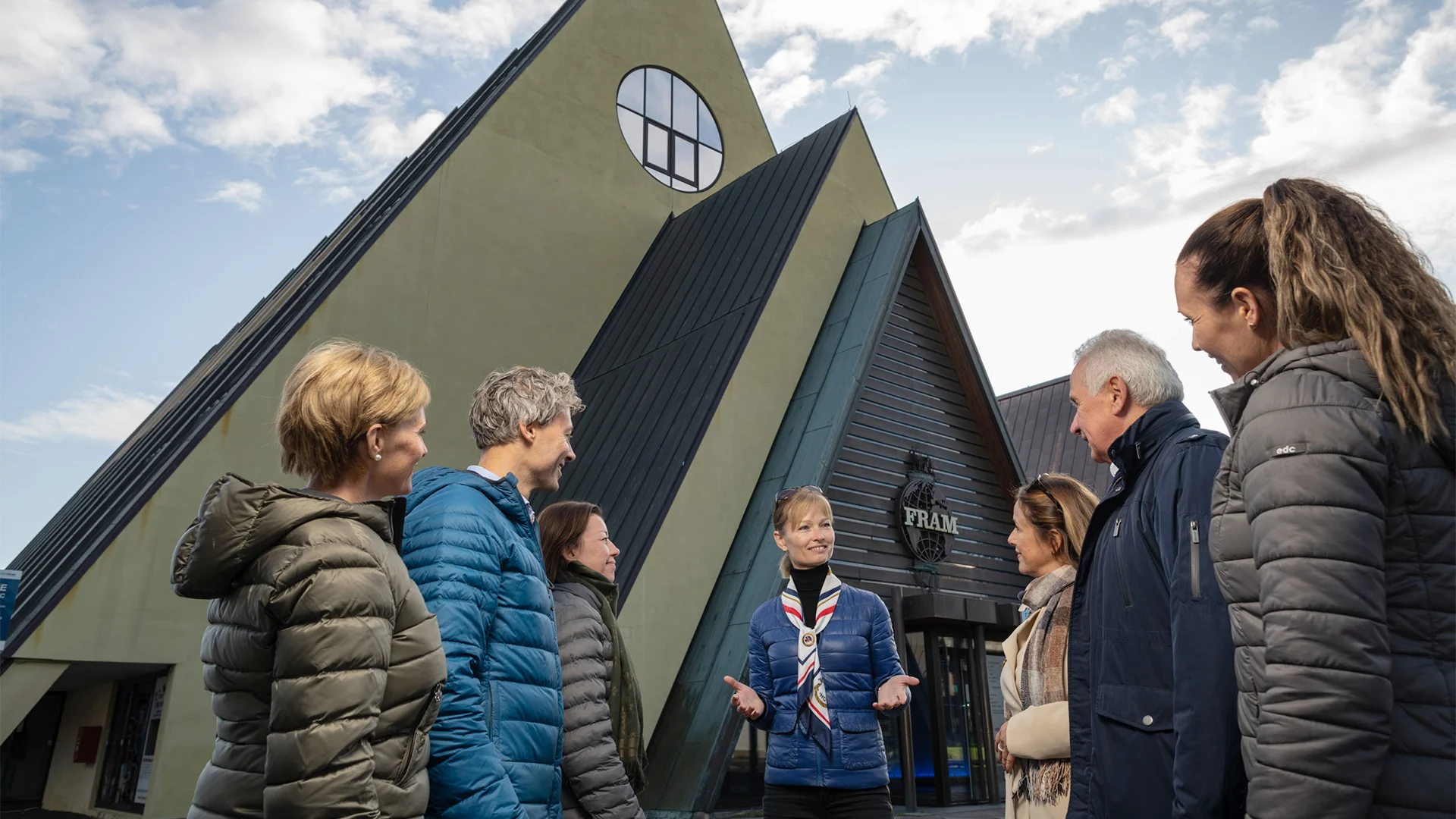
Oslo Discovery Tour – Bus Sightseeing
5h 30min
Read more
Select the day

Settle in at sea
- Port:
- Day of voyage: 2
Details
This is your chance to settle into your cabin, get a taste of Norway’s coastal cuisine in the ship’s three restaurants and bar, and start to get to know your fellow passengers.
You’ll have time to simply watch Norway’s spectacular southern coast glide by. Take it all in from the expansive Observation Deck, from the comfort of your ship’s two-storey lounge and bar, or as you sweat it out in the panoramic sauna.
As well as the views, this stretch of coast is home to more than its fair share of enthralling stories. Find out more about Norway’s coast and the voyage ahead in the lectures, presentations, and onboard activities planned for today.
Select the day

Stavanger’s old-world charm
- Port: Stavanger
- Day of voyage: 3
Details
Today, you’ll spend much of the day in Stavanger, a colourful waterside city with an international ambience and a lively cultural scene. Discover the architectural relics of Gamle (Old) Stavanger, which includes Northern Europe’s best-preserved collection of wooden houses, and Norway’s oldest cathedral, dating from the 12th century.
You can also visit the Norwegian Petroleum Museum, pop into a local boutique shop, or simply enjoy a beer on the waterfront. Optional excursions are also available, such as a guided city walk, as well as a Viking-themed bus tour.
Available excursions
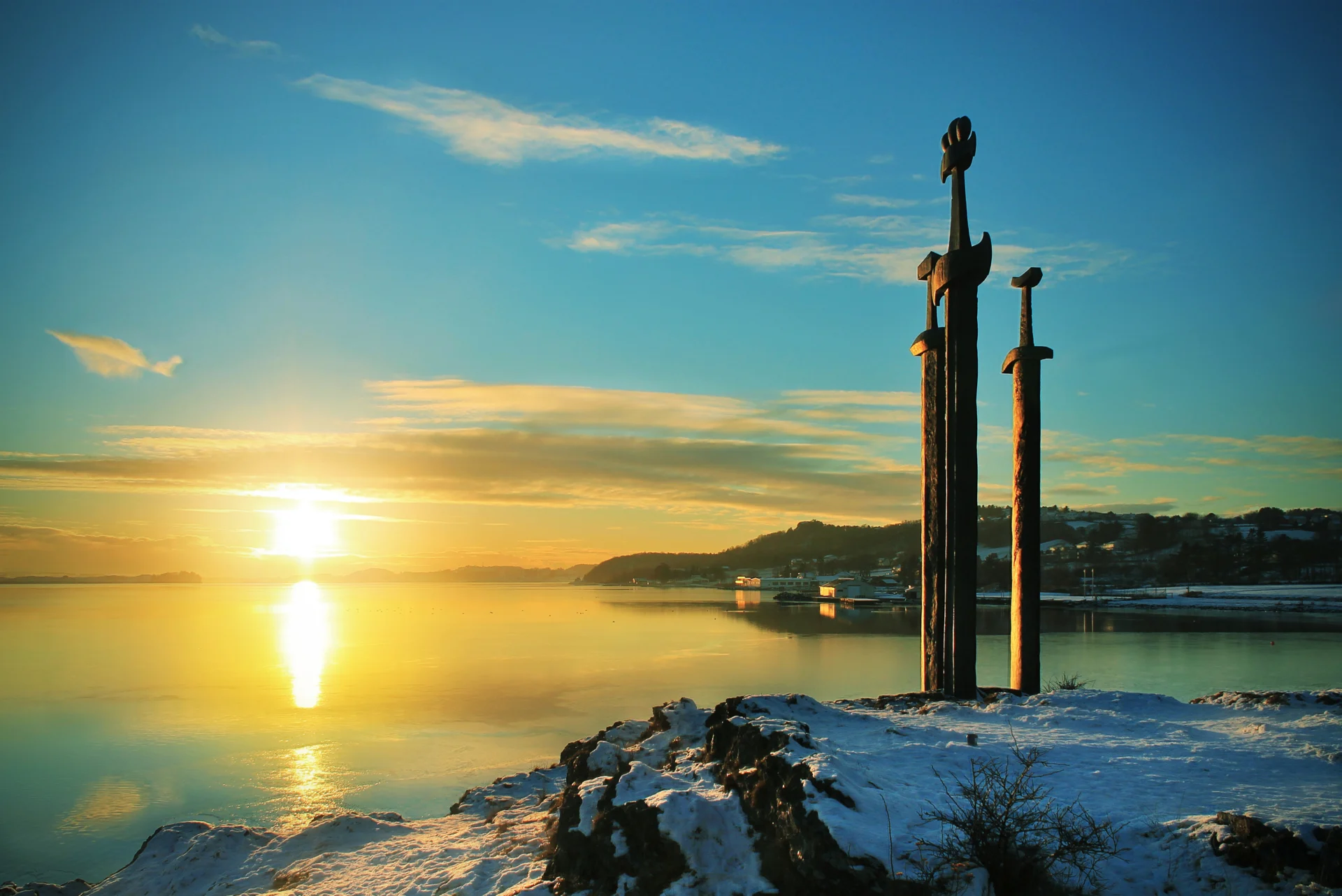
On the trail of the Vikings
Stavanger 3h
Read more
Available
all seasons
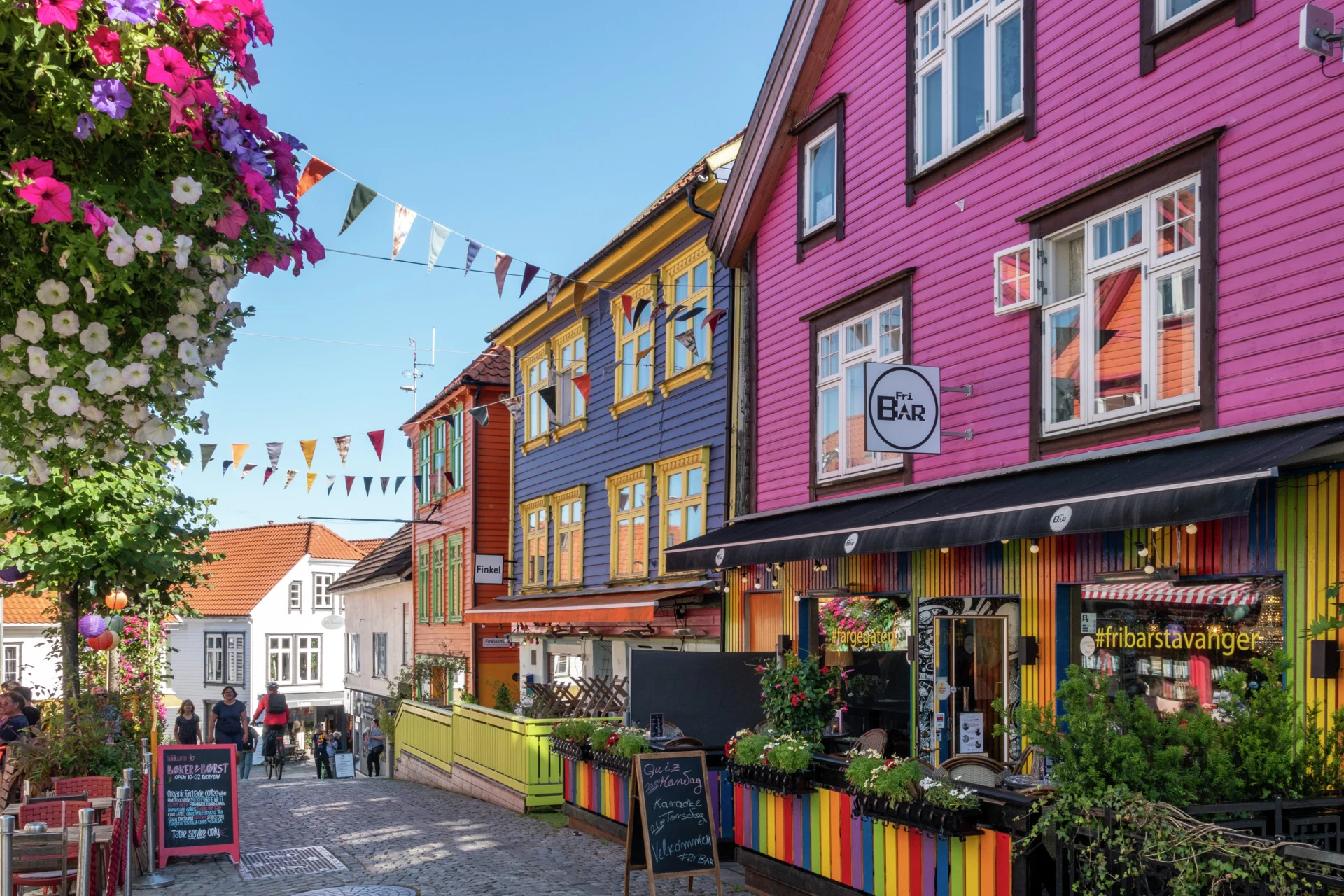
Walking tour in the old town of Stavanger
Stavanger 2h 30min
Read more
Available
all seasons
Select the day

A picturesque town
- Port: Ålesund
- Day of voyage: 4
Details
After breakfast on the ship, we’ll dock at Ålesund, a town that spreads out across a string of islands.
Many of the buildings here, from the bright colours to the rounded spires, were inspired by the Art Nouveau style, which was popular in the early 1900s. You can get impressive photos of the archipelago from the nearby Mount Aksla viewpoint.
You can also visit the Atlantic Sea Park, Norway’s first marine science centre. This is one of Northern Europe’s largest saltwater aquariums, providing a home to seals, otters, and crabs, as well as many other kinds of marine life. You can even see Humboldt Penguins here, a species otherwise absent north of the equator.
Join an optional excursion to explore Ålesund on foot, or explore the surrounding picturesque islands by bus, and visit a striking lighthouse next to a beautiful beach.
Available excursions
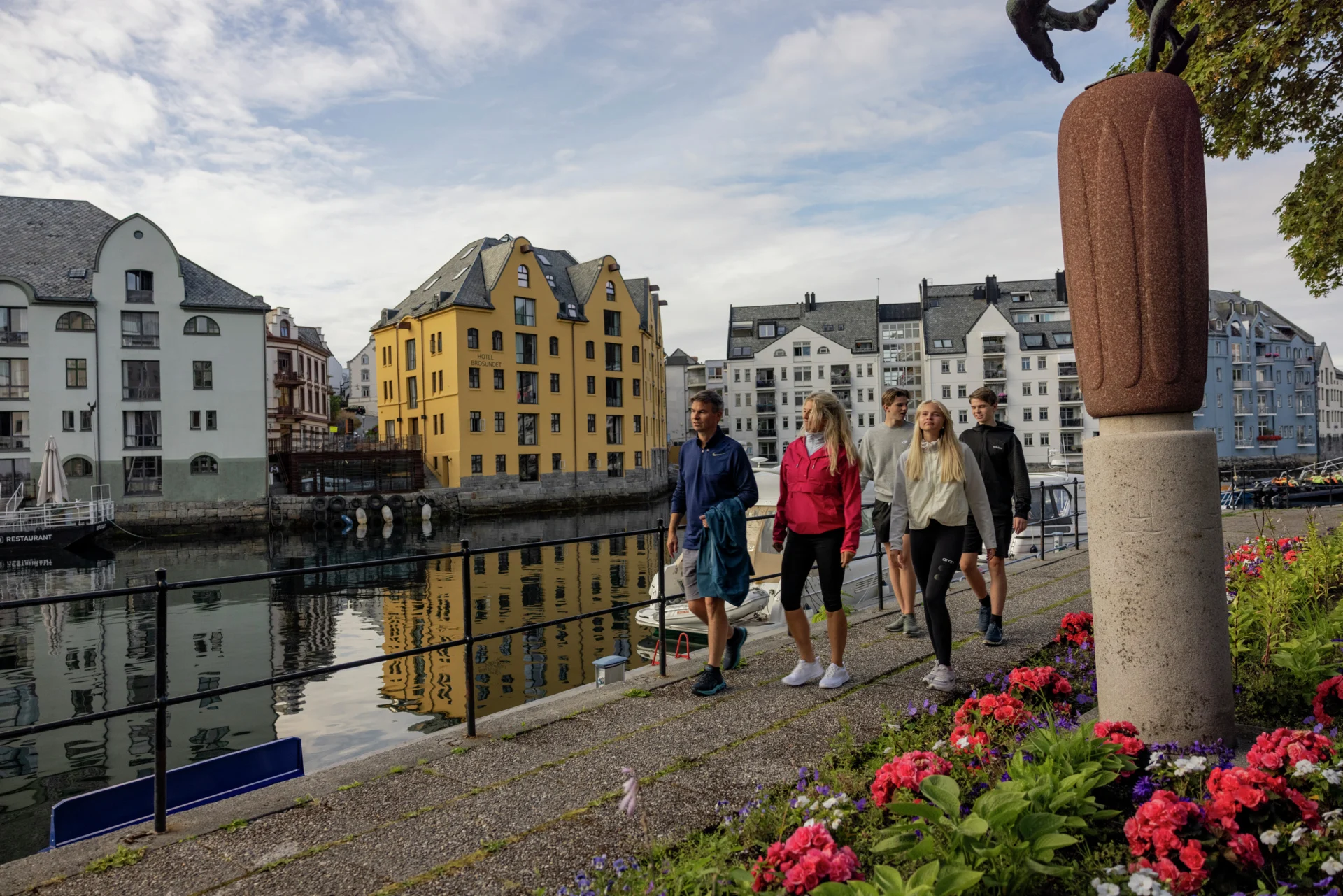
Ålesund on Foot
Ålesund 1h 30min
Read more
Available
Jun - Aug + Sep - Oct + Apr - May
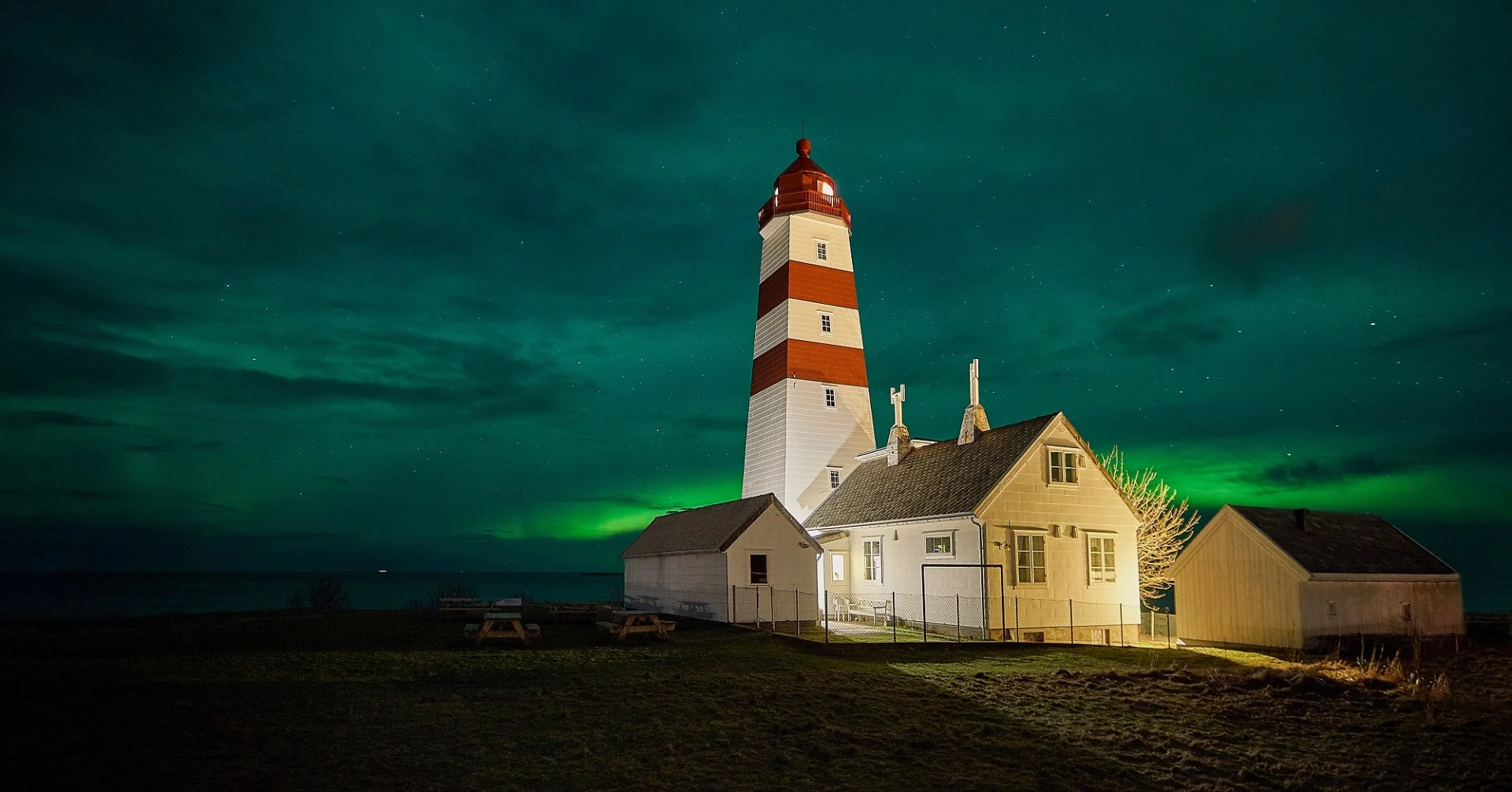
Saga Islands Bus Tour to Alnes - Winter
Ålesund 3h
Read more
Available
Apr - May + Sep - Oct + Nov - Mar

Architecture & Breweries - Ålesund on Foot
Ålesund 2h 15min
Read more
Available
all seasons
Select the day

An ancient fishing town
- Port: Rørvik
- Day of voyage: 5
Details
The cosy fishing port of Rørvik in the picturesque Vikna archipelago may look small but it has a huge history that is told through both the landscape and the town’s collection of museums.
Here, you can join an optional excursion and time travel through the last 10,000 years and get a glimpse of the future, thanks to the Ice Age-carved landscape, carefully preserved 19th-century living rooms, and the ingenuity of Norwegian salmon production – each preserved and explained in three excellent museums.
In the afternoon, we’ll continue sailing north through the Vikna archipelago made up of 6,000 islands, islets and reefs. The local gardens bloom with plum and apple blossoms in the spring, even at 65°N, thanks to the maritime climate.
As we sail through the night, we’ll leave the Helgeland coast behind us as we cross the Arctic Circle.
Available excursions

Time Travel through the Coastal Town of Rørvik
Rørvik 2h
Read more
Available
Apr - May + Jun - Aug + Sep - Oct

Nærøya: The island of the Gods
Rørvik 3h
Read more
Available
Apr - May + Nov - Mar
Select the day

Lofoten islands and our historic birthplace
- Port: Svolvær, Stokmarknes
- Day of voyage: 6
Details
Today, we explore Lofoten. As soon as you see the towering peaks with fishing villages clinging to their sides, you’ll understand why this island chain is praised as one of Norway’s most stunning locations.
We’ll dock in the town of Svolvær in the morning. Located on the island of Austvågøya in the heart of Lofoten, Svolvær is the biggest town of the archipelago, humming with shops, restaurants, galleries, and cafés to enjoy. You can also admire views of the Svolvær Goat, a nearby rock formation named for resembling a goat and its horns.
A variety of optional excursions are available from Svolvær, including winter fishing, paddling along the coastline in a kayak, or embarking on a bus tour to learn more about Lofoten’s history.
We can’t visit the area without spending a couple of hours in Stokmarknes. It was here that the Coastal Express was founded in 1893 by shipping pioneer, Richard With. On the waterfront, you’ll find our 1956 ship MS Finnmarken, encased in the Hurtigruten Museum’s glass building shaped like a ship in a bottle.
Available excursions
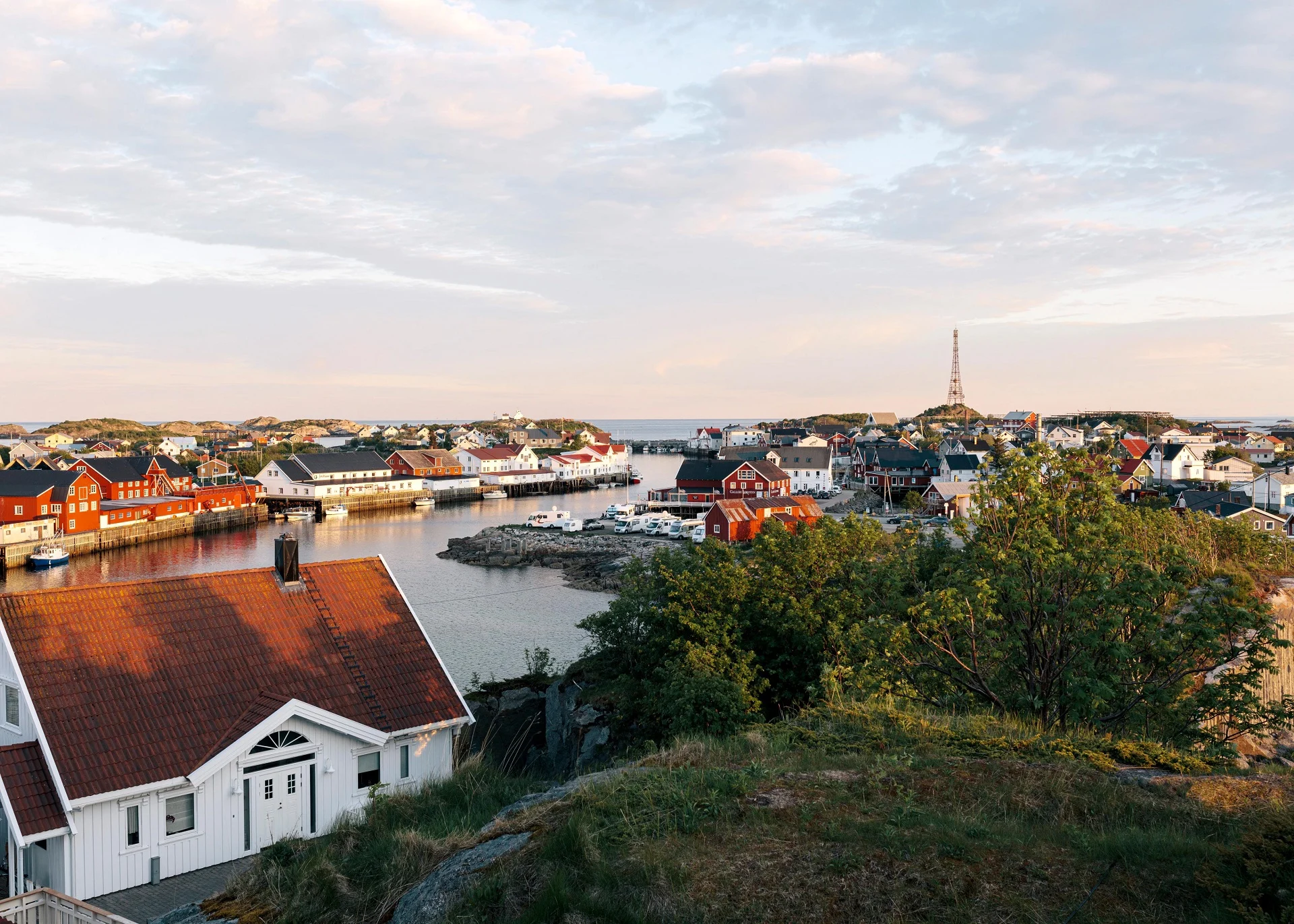
Lofoten Scenery & Henningsvær - winter
Svolvær 2h 30min
Read more
Available
Apr - May + Sep - Oct + Nov - Mar

Winter Fishing in Lofoten
Svolvær 2h 45min
Read more
Available
Apr - May + Sep - Oct + Nov - Mar
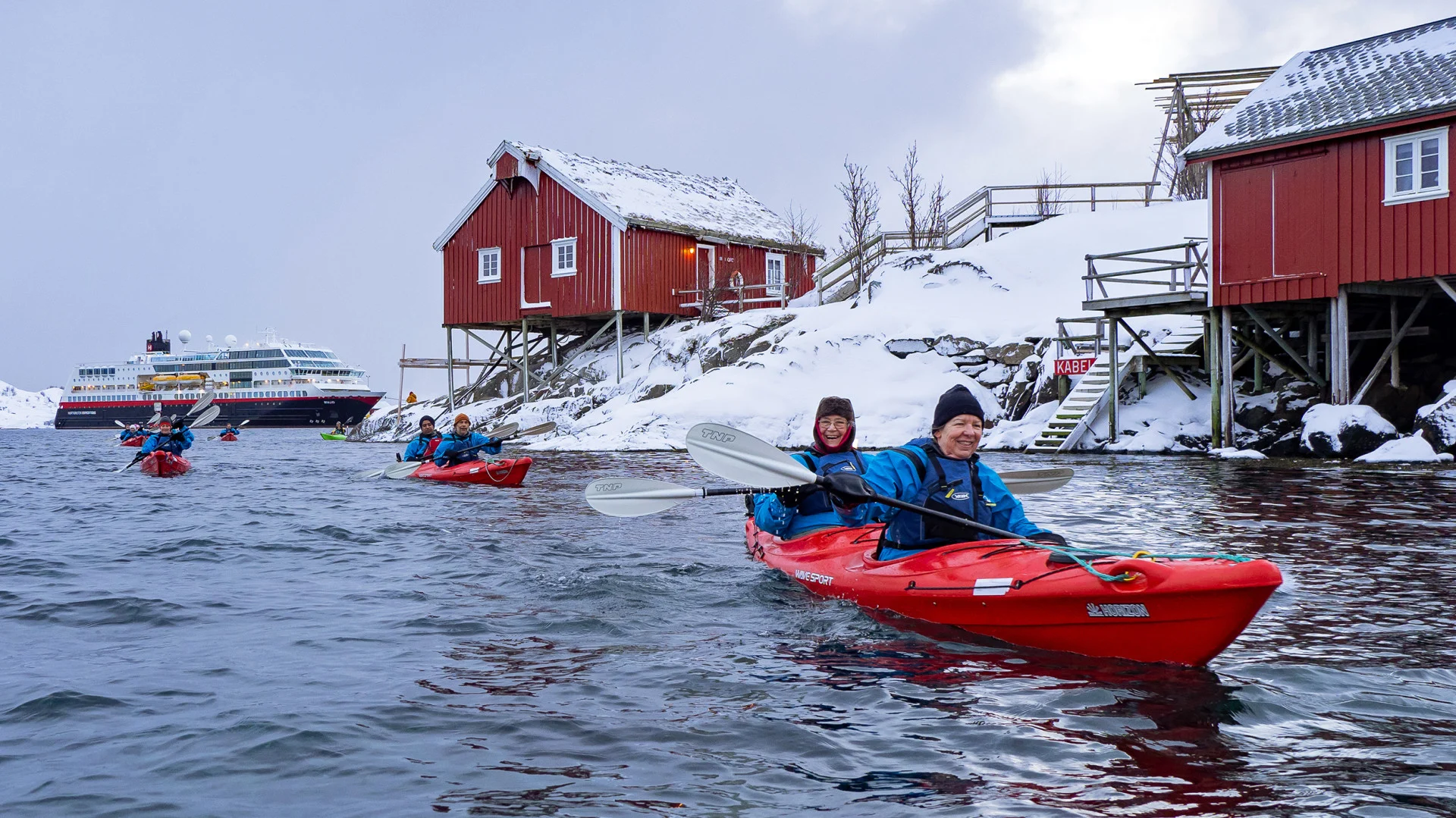
Kayaking in Lofoten - Winter
Svolvær 2h 30min
Read more
Available
Apr - May + Sep - Oct + Nov - Mar
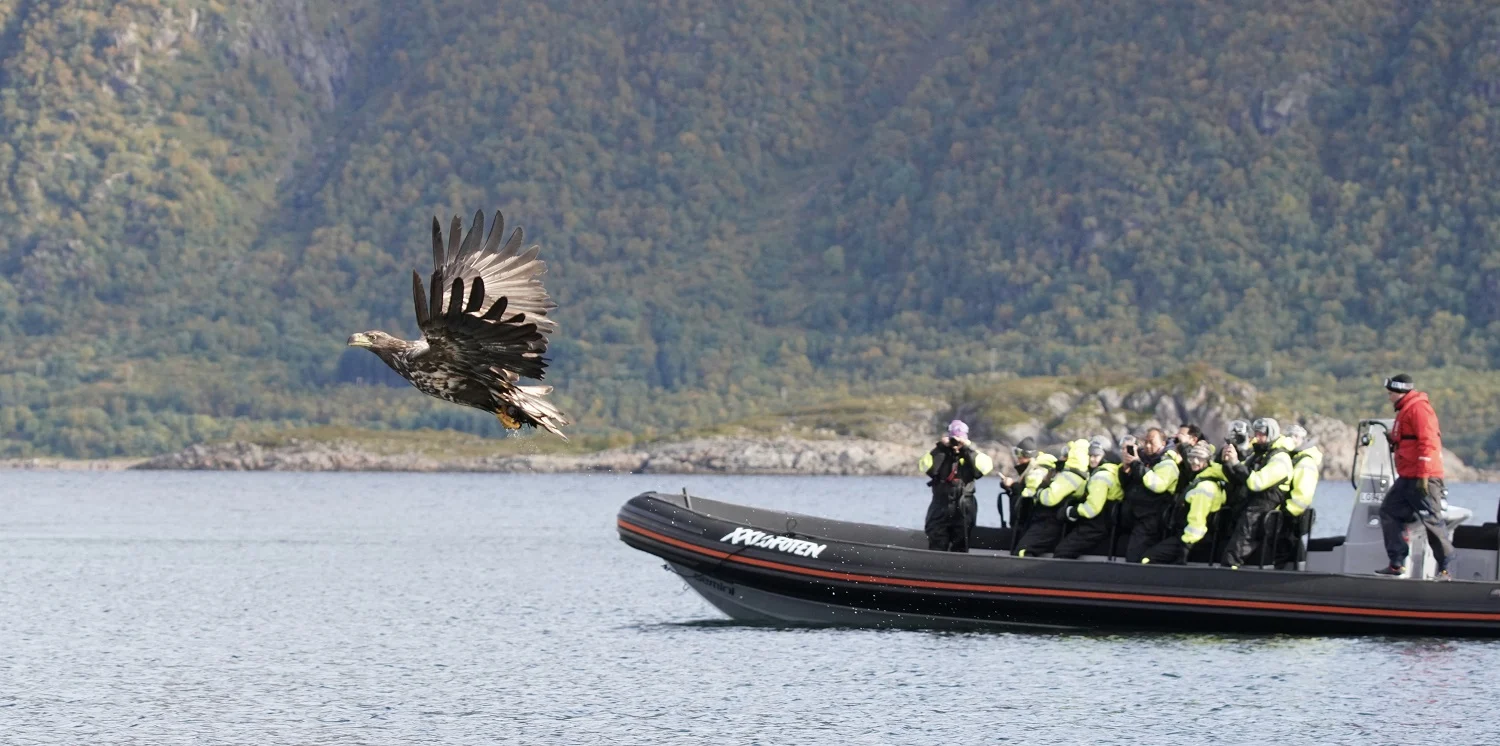
Lofoten RIB & Sea Eagle Adventure
Svolvær 1h 30min
Read more
Available
Jun - Aug + Sep - Oct
Select the day

The gateway to the Arctic
- Port: Tromsø
- Day of voyage: 7
Details
This urban city, 217 miles north of the Arctic Circle, is buzzing with life, with everything from trendy restaurants and cafés to boutique shops selling local crafts and produce, and even high fashion. Our ship will be in port here for eight hours, giving you plenty of time to join optional excursions and explore the city yourself.
You can visit the Polar Museum, which chronicles the city’s legacy of Arctic hunting and trade. Head to the Polaria centre, an aquarium home to a variety of Arctic marine species, including seals. Across the water from Polaria, you’ll find the Arctic Cathedral, standing out in the cityscape due to its striking design and impressive stained-glass window.
Tromsø is the place to tick off some of those bucket-list experiences. Optional excursions include dog sledding through the snowy scenery, or exploring this remarkable Arctic city on a bus tour.
Available excursions

Tromsø, The Arctic Capital
Tromsø 3h 30min
Read more
Available
all seasons

Explore Tromsø by E-bike
Tromsø 3h
Read more
Available
Apr - May + Jun - Aug + Sep - Oct
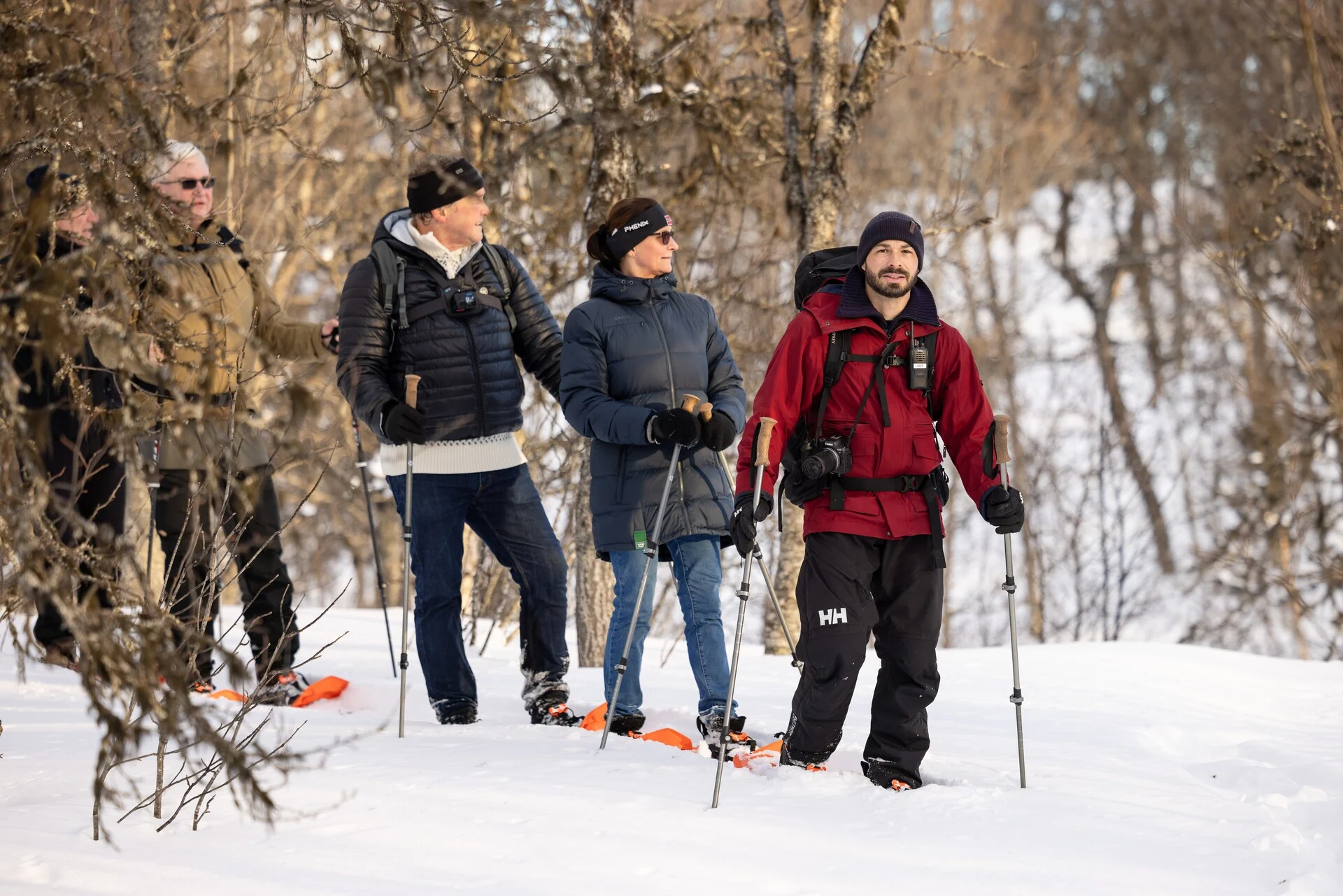
Cross-country skiing in Tromsø
Tromsø 3h
Read more
Available
Nov - Mar + Apr - May
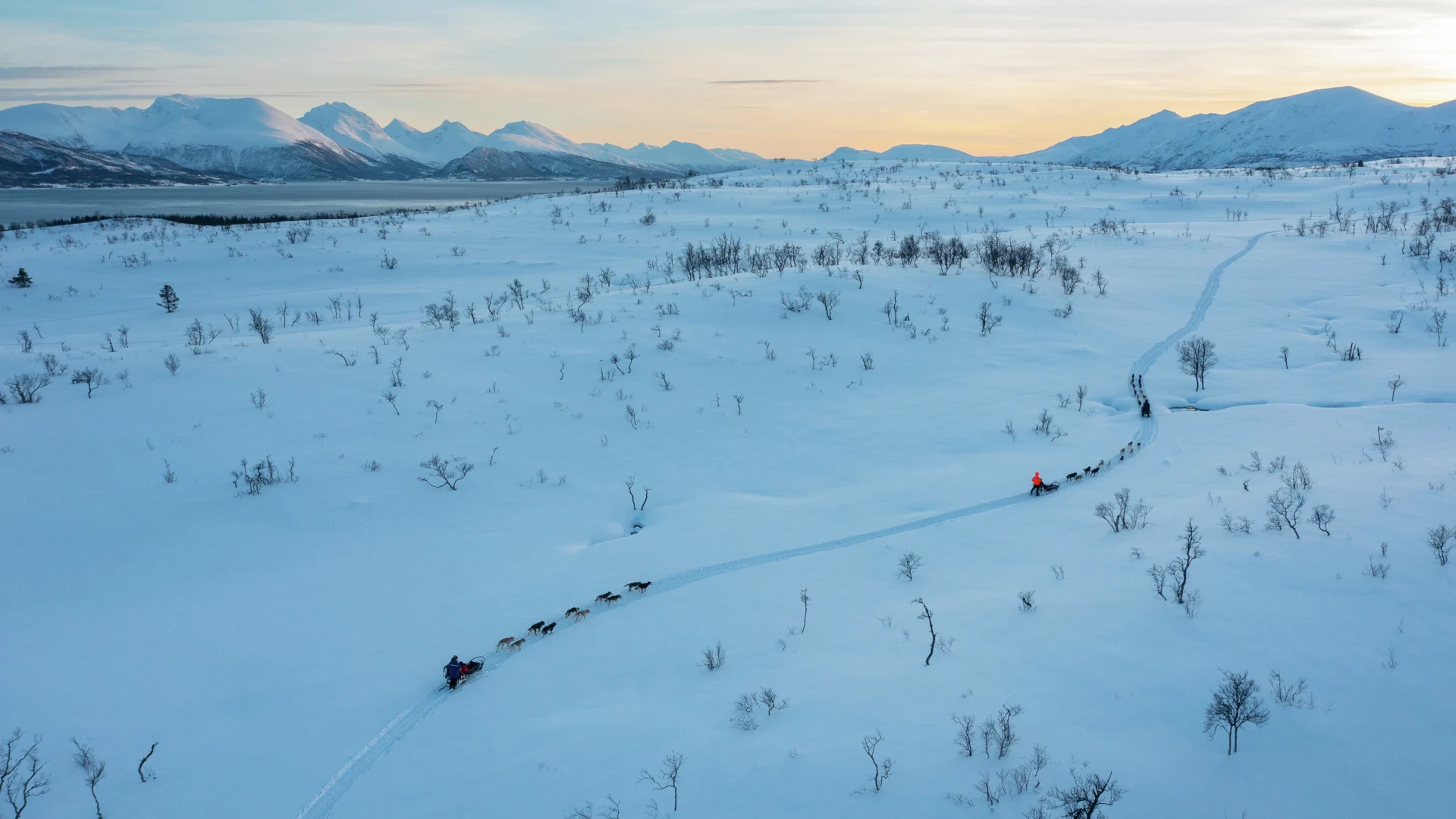
Dog Sledding in Winter Wonderland
Tromsø 3h 30min
Read more
Available
Apr - May + Nov - Mar
Select the day

The northernmost point
- Port: Honningsvåg
- Day of voyage: 8
Details
Arriving early in the morning, you’ll have a full day in Honningsvåg. This far north, winters are long and snowfall is high, so get ready for some fantastic winter scenery and activities.
Feel the snow crunching under your snowshoes as you hike across the plains with your Expedition Team. On optional excursions, you could try your hand at ice fishing, a beloved winter tradition in the far north. Get a taste of the local delicacy, king crab, which is caught in the waters around Honningsvåg and served year-round.
The highlight of any trip to Honningsvåg is a visit to the North Cape, which looks out over the Barents Sea, also available as an optional excursion. This is one of the northernmost points of mainland Europe, and as we’re visiting in winter, you can expect snow landscapes and dramatic views.
Having reached the northernmost point of our voyage, we’ll turn around and begin going south as we sail away in the evening.
Available excursions

The North Cape
Honningsvåg 3h
Read more
Available
all seasons
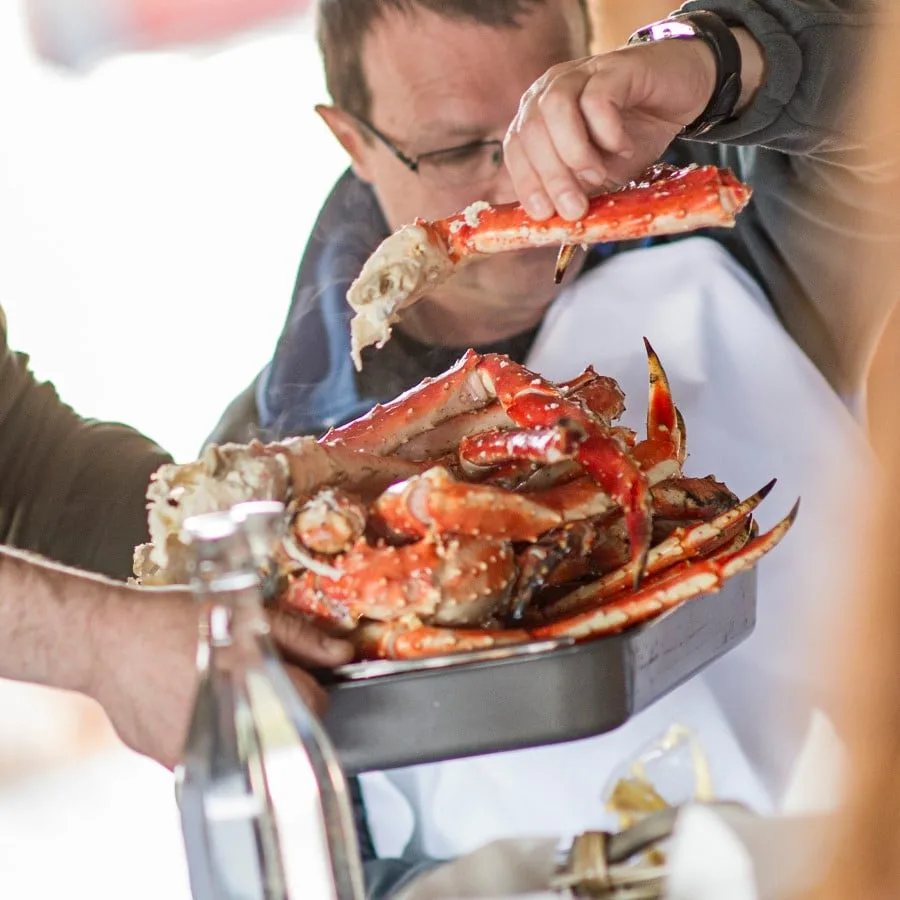
North Cape and King Crab Experience - Winter
Honningsvåg 6h 30min
Read more
Available
Apr - May + Sep - Oct + Nov - Mar
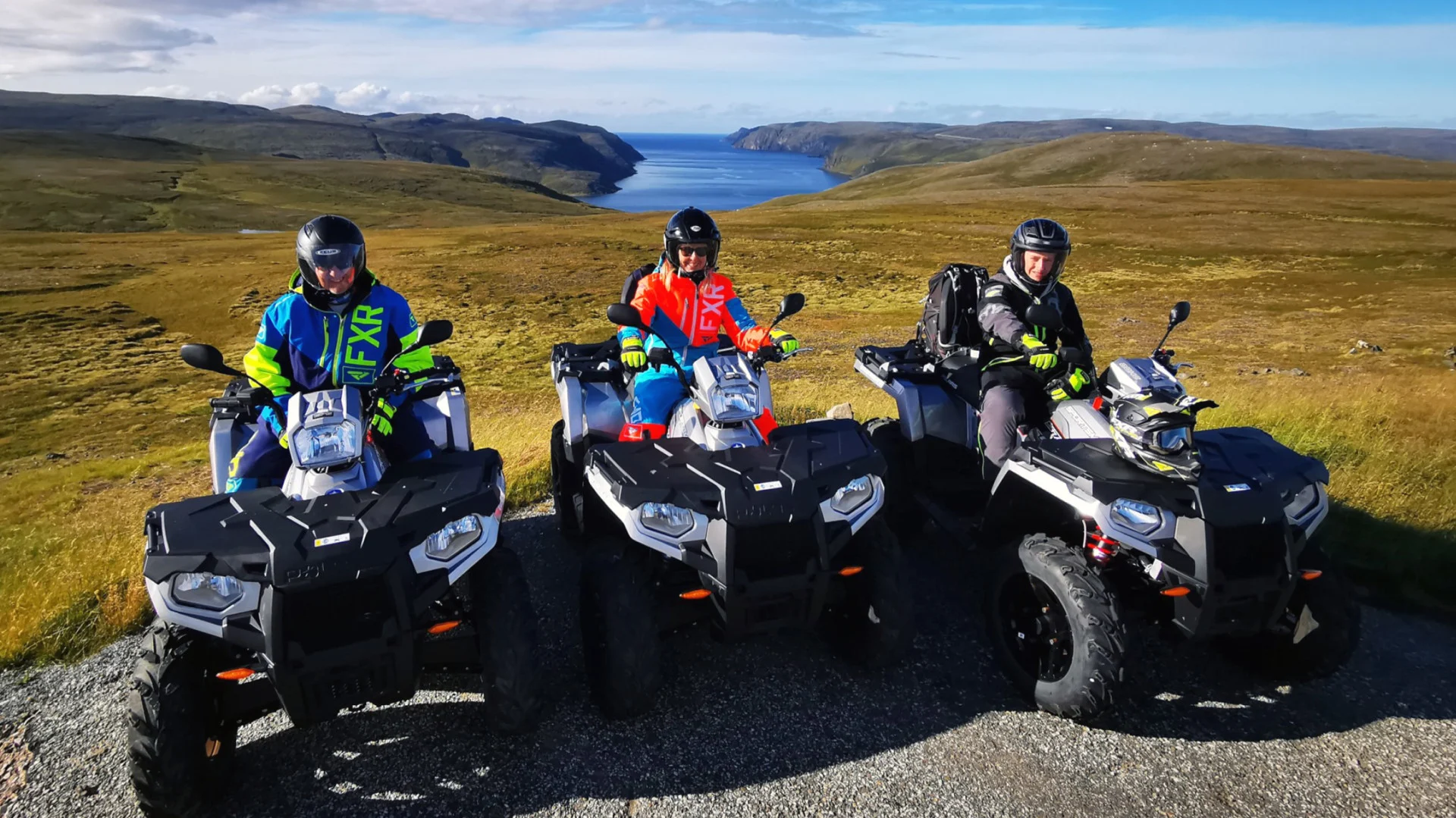
Quad Biking to North Cape
Honningsvåg 4h 30min
Read more
Available
Apr - May + Jun - Aug + Sep - Oct
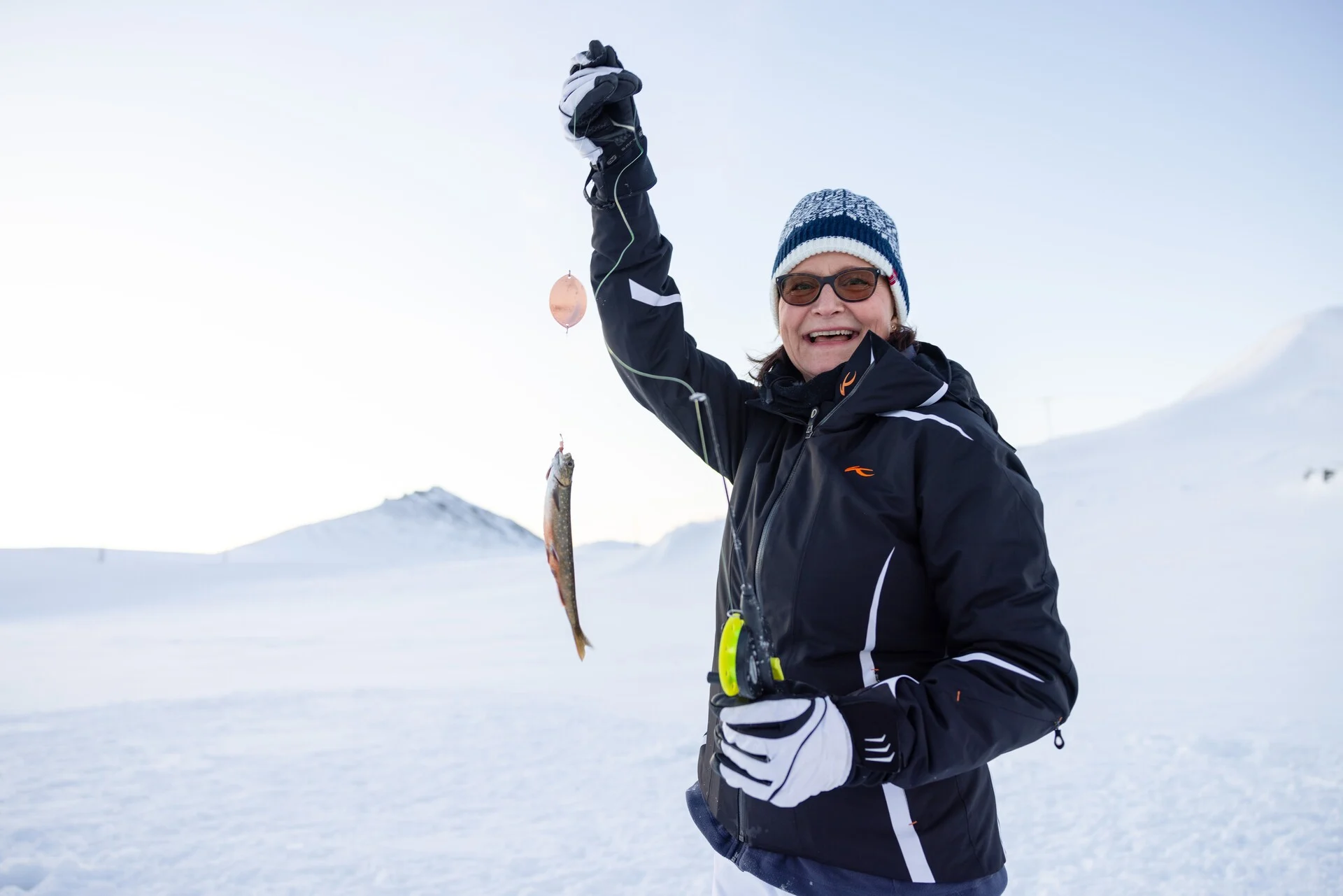
Arctic Ice Fishing
Honningsvåg 2h 30min
Read more
Available
Nov - Mar
Select the day

The city of Northern Lights
- Port: Alta
- Day of voyage: 9
Details
At 70 degrees north, this town is far above the Arctic Circle. The area is known for particularly good Northern Lights visibility, so keep your camera ready.
On an optional excursion, you can find out more about day-today life in Alta, see prehistoric rock art and visit the Northern Lights Cathedral, which has an exhibition showing how Alta became the epicentre for ground-breaking research of the Aurora Borealis between the 19th and 20th centuries.
Increased snowfall in the winter allows for some truly authentic Arctic excursions, like dogsledding. You can try this on wheels if you’re here when there’s no snow on the ground! The snow and climate of Alta also create the perfect conditions to build and maintain the Igloo Hotel. Located on the banks of river Alta and made from 250 tonnes of ice, this is the world's northernmost ice hotel, decorated with ice sculptures and wall carvings.
Available excursions
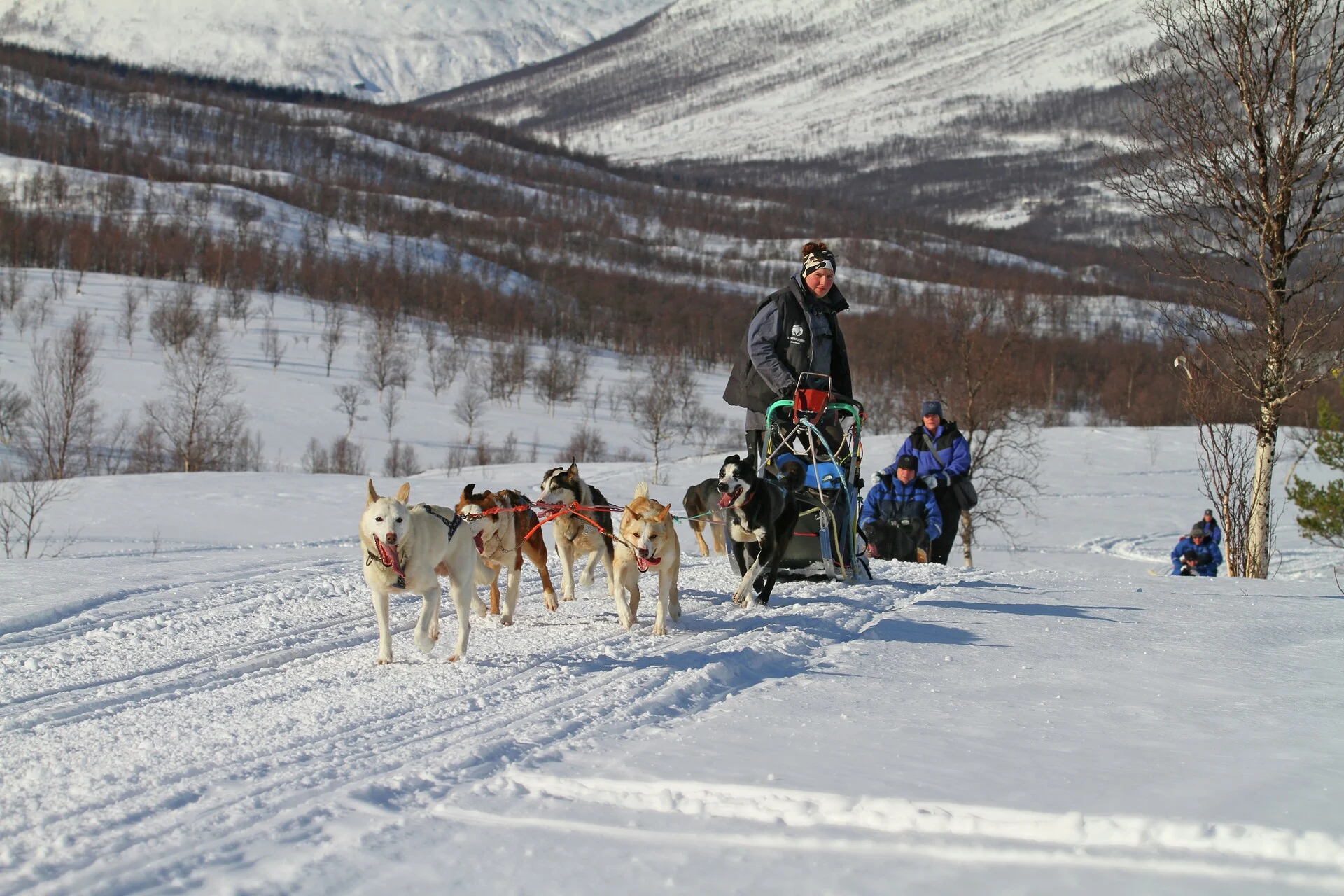
Dog Sledding in Alta
Alta 2h 30min
Read more
Available
Nov - Mar
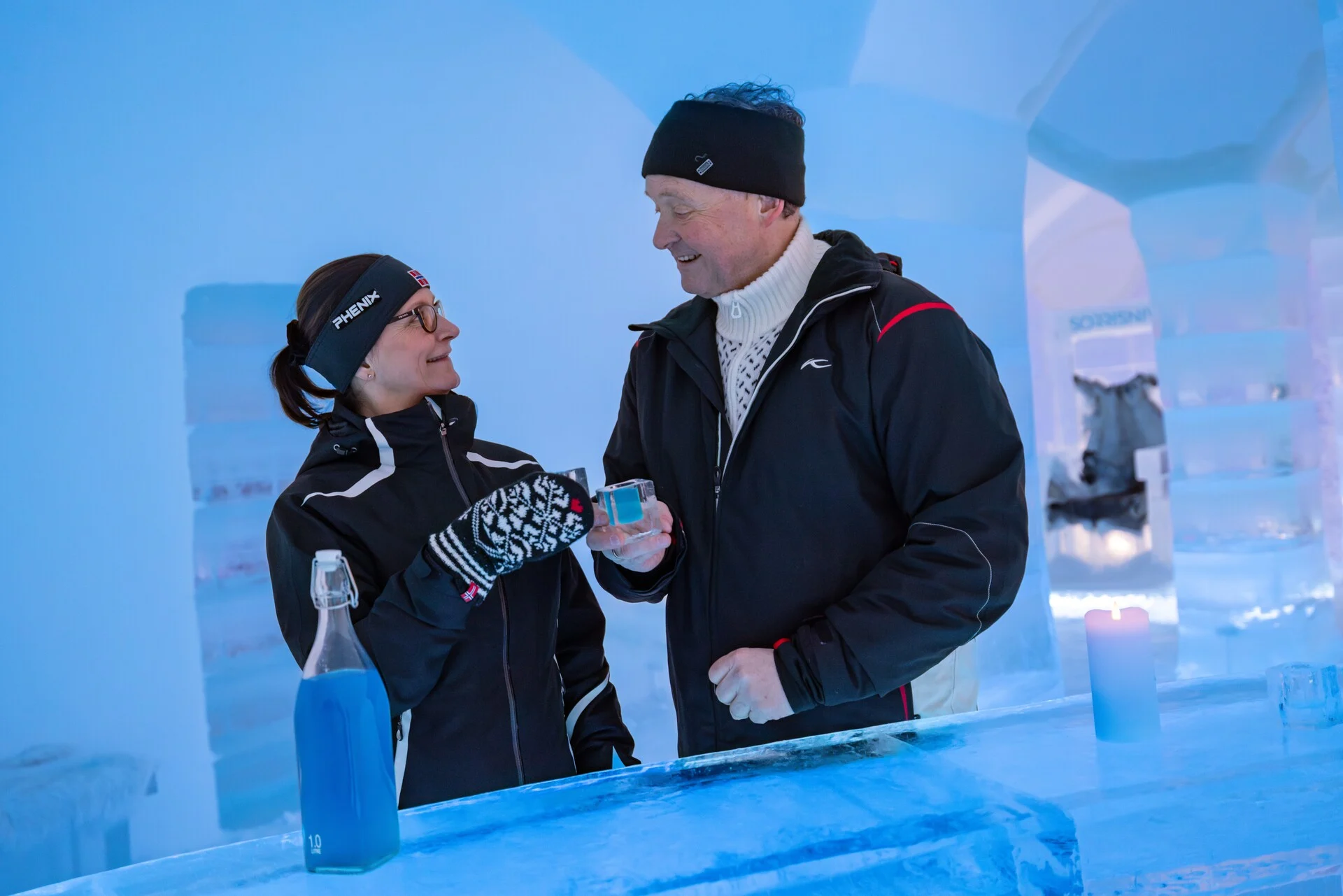
Visit The Magical Igloo Hotel in Alta
Alta 2h 30min
Read more
Available
Nov - Mar
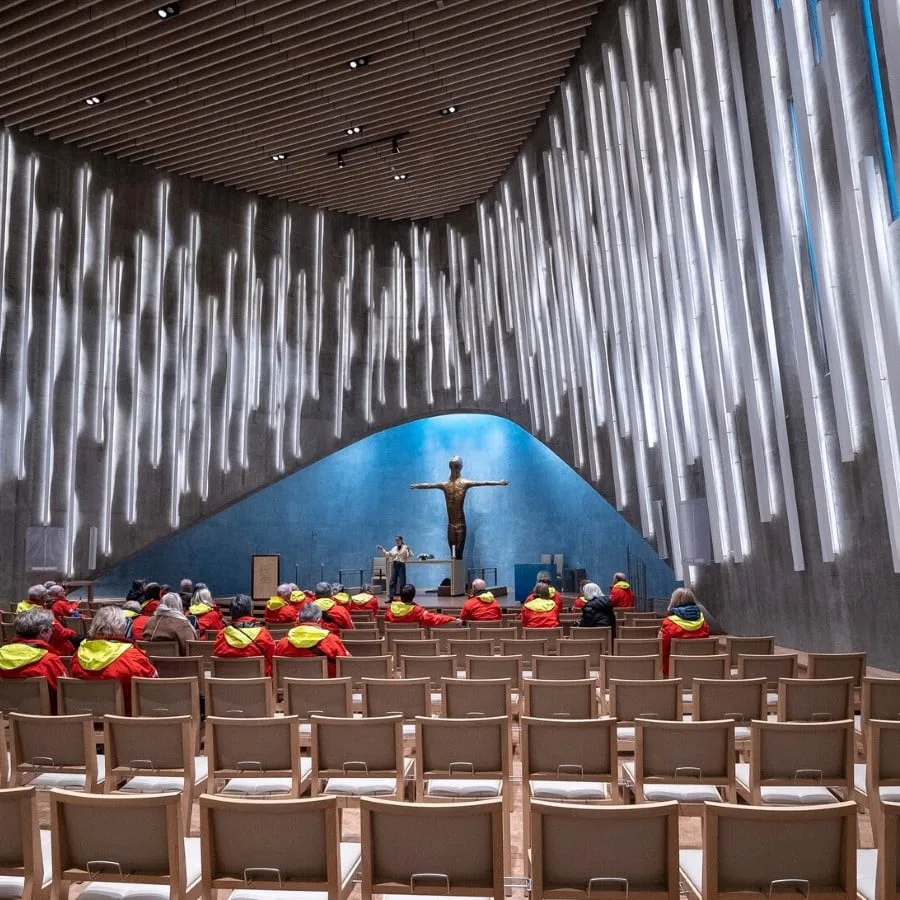
UNESCO Rock Art & Northern Lights Cathedral
Alta 3h
Read more
Available
Apr - May + Sep - Oct + Nov - Mar
Select the day

Arctic beauty awaits
- Port: Narvik
- Day of voyage: 10
Details
Narvik sits on a peninsula where three beautiful fjords meet. It was originally developed as a year-round, ice-free port for the nearby iron ore mines. Nowadays, it’s known for its World War II heritage and as a gateway to active pursuits such as skiing, dog sledding and hiking.
On optional excursions, you can dive into Narvik's intriguing past at the Narvik War Museum, where the town's World War II history comes to life with engaging exhibits and narratives.
For panoramic views of Narvik from above, ride the cable car to the top of Narvikfjellet.
Available excursions

Wonders of Wildlife at Polar Park
Narvik
Read more

Self-Drive Dogsled Adventure
Narvik 3h 30min
Read more
Available
Nov - Mar + Apr - May
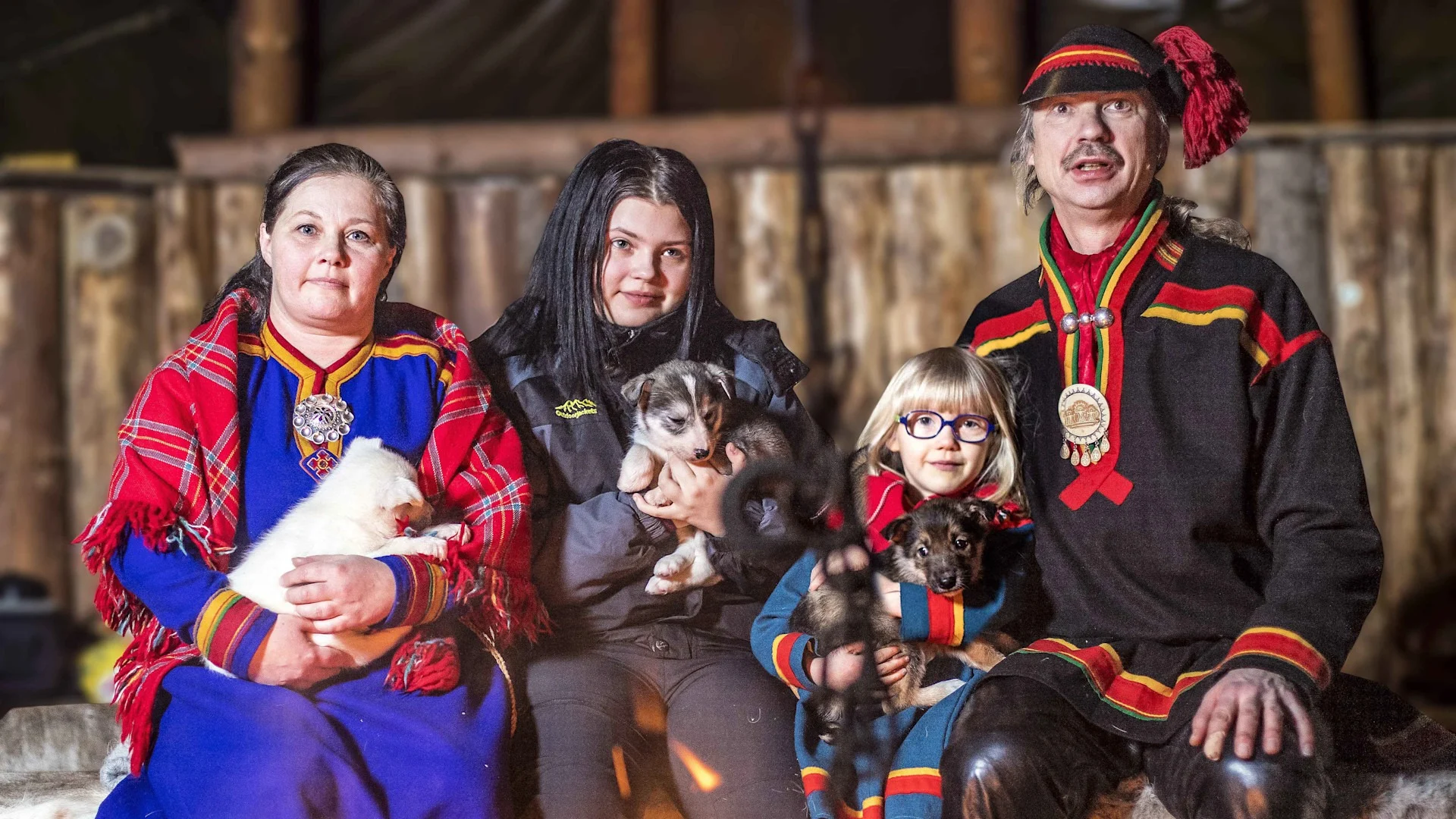
Sámi Cultural Encounter
Narvik 3h 30min
Read more

Snowshoe Trek with Panoramic Views
Narvik
Read more
Select the day

Cruise the inner coastal route
- Port:
- Day of voyage: 11
Details
After Narvik, we head south along the enchanting Norwegian coast. You’ll be in awe of windswept islands, sheltered bays, and passing by some of the most beautiful fjords in the world. It’s also inhabited by a wide range of wildlife, such as majestic Sea Eagles.
When we started sailing north of the Trøndelag region in 1893, much was still unknown about the coastline. But, over the years, we’ve become experts in these waters. Today, we are among the few with the maritime knowledge and skill to take you through the many skerries, islets and hidden fjords that characterise this stretch of coast.
Select the day

Alpine village by the fjord
- Port: Åndalsnes
- Day of voyage: 12
Details
After docking in the town centre in the morning, you have the chance to explore Åndalsnes, a picturesque coastal town located along Isfjord at the end of Romsdalsfjord.
The literal highlights of Åndalsnes are the mountains that tower over the town. They are the reason the town has become Norway’s go-to destination for hikers, climbers, skiers, and more. The Troll Wall, a 1,000-m vertical cliff along the Romsdalen valley also attracts adrenaline seekers the world over.
Take in the sights with a city walk and a relaxing ride on the Romsdal Gondola which takes you to the top of Nesaksla Mountain, 708 metres above sea level. There, enjoy a 360-degree view of the mighty Romsdalshorn, Åndalsnes town centre below, and the Rauma river. For those who love train rides, don’t miss the opportunity to join an excursion riding the Golden Train, which has been called “the most scenic railway journey in Europe” by Lonely Planet.
Available excursions
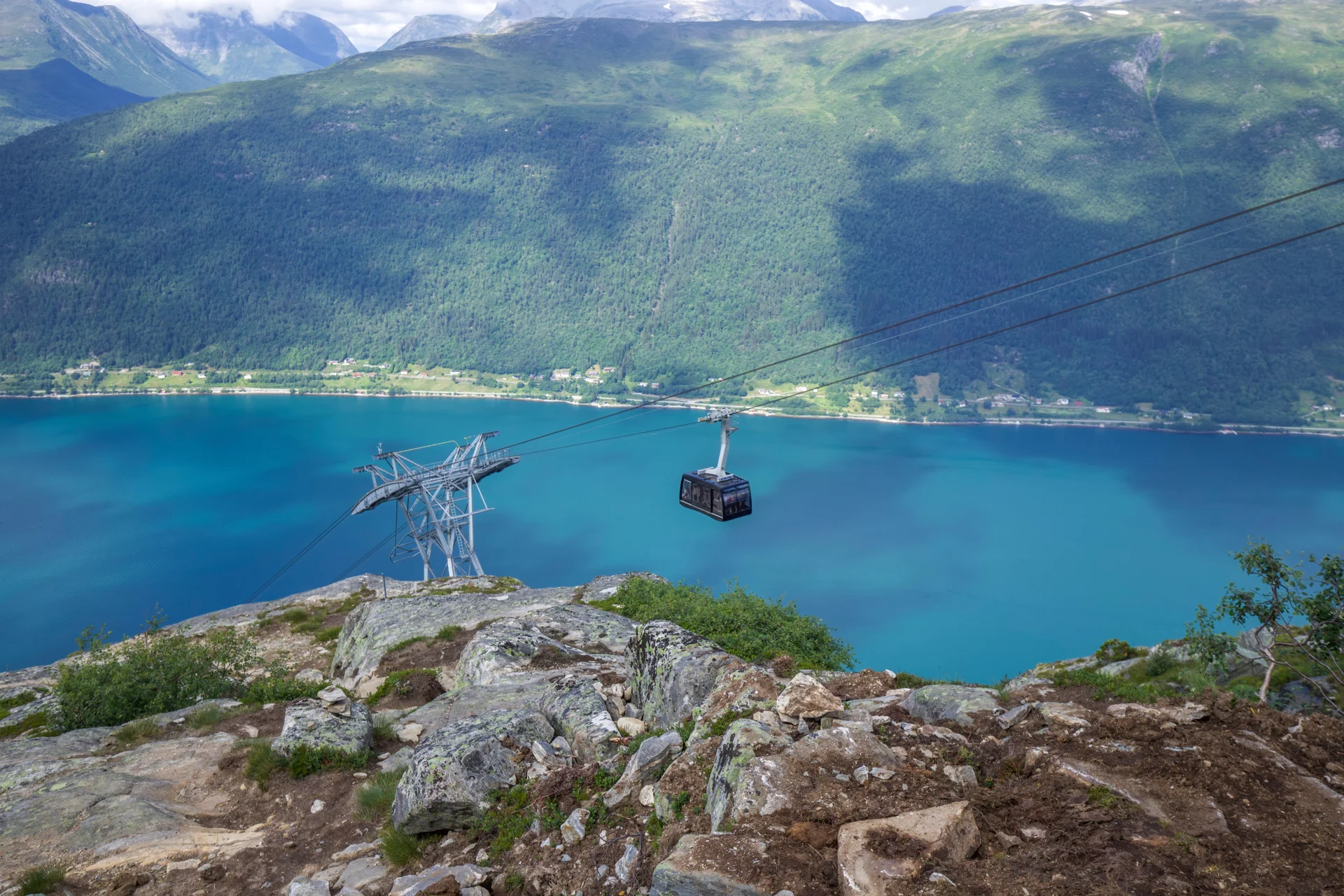
Åndalsnes Town Walk and Romsdal Gondola
Åndalsnes 2h 30min
Read more
Available
all seasons

The Golden Train - Winter
Åndalsnes 2h 40min
Read more
Available
Sep - Oct + Nov - Mar + Apr - May
Select the day

Beautiful Bergen
- Port: Bergen
- Day of voyage: 13
Details
Surrounded by seven mountains and the sea, the old capital of Bergen is one of Norway’s most picturesque and historic cities, as well as being its second largest.
Stroll through the UNESCO-listed Bryggen district and discover its colourful wooden wharfs dating back to the 14th century. Bergen’s famous fish market is worth a visit, too. It promises to be a feast for the senses with the sights, sounds, and smells of bountiful, fresh seafood which can be cooked there and then for you.
One of the best-known attractions in Bergen is the Fløibanen funicular, which brings you to the top of Mount Fløyen. The summit has a wonderful view over the city, the nearby fjord, and the other surrounding peaks.
Another option is to join an excursion by cable car to Mount Ulriken, the tallest of the city’s seven mountains. On this tour you’ll also get to visit Fantoft stave church, a beautiful replica of the 12th century Viking church which stood nearby.
Available excursions
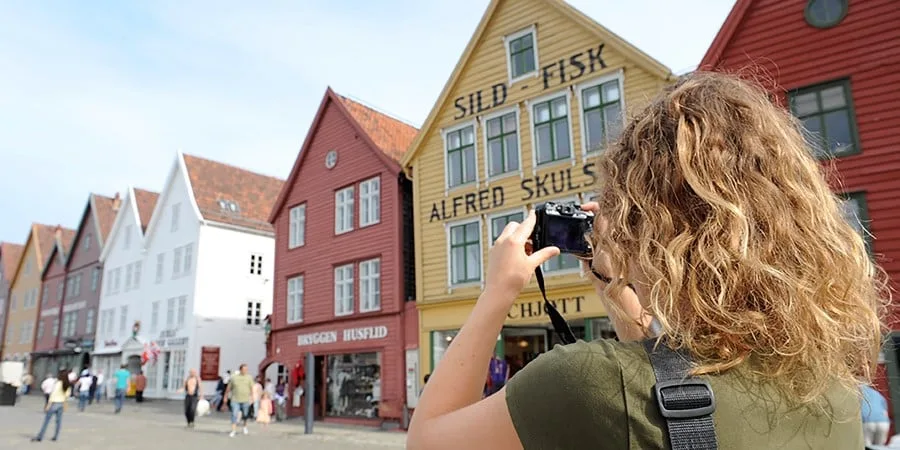
Bergen City Walk
Bergen 2h 30min
Read more
Available
all seasons
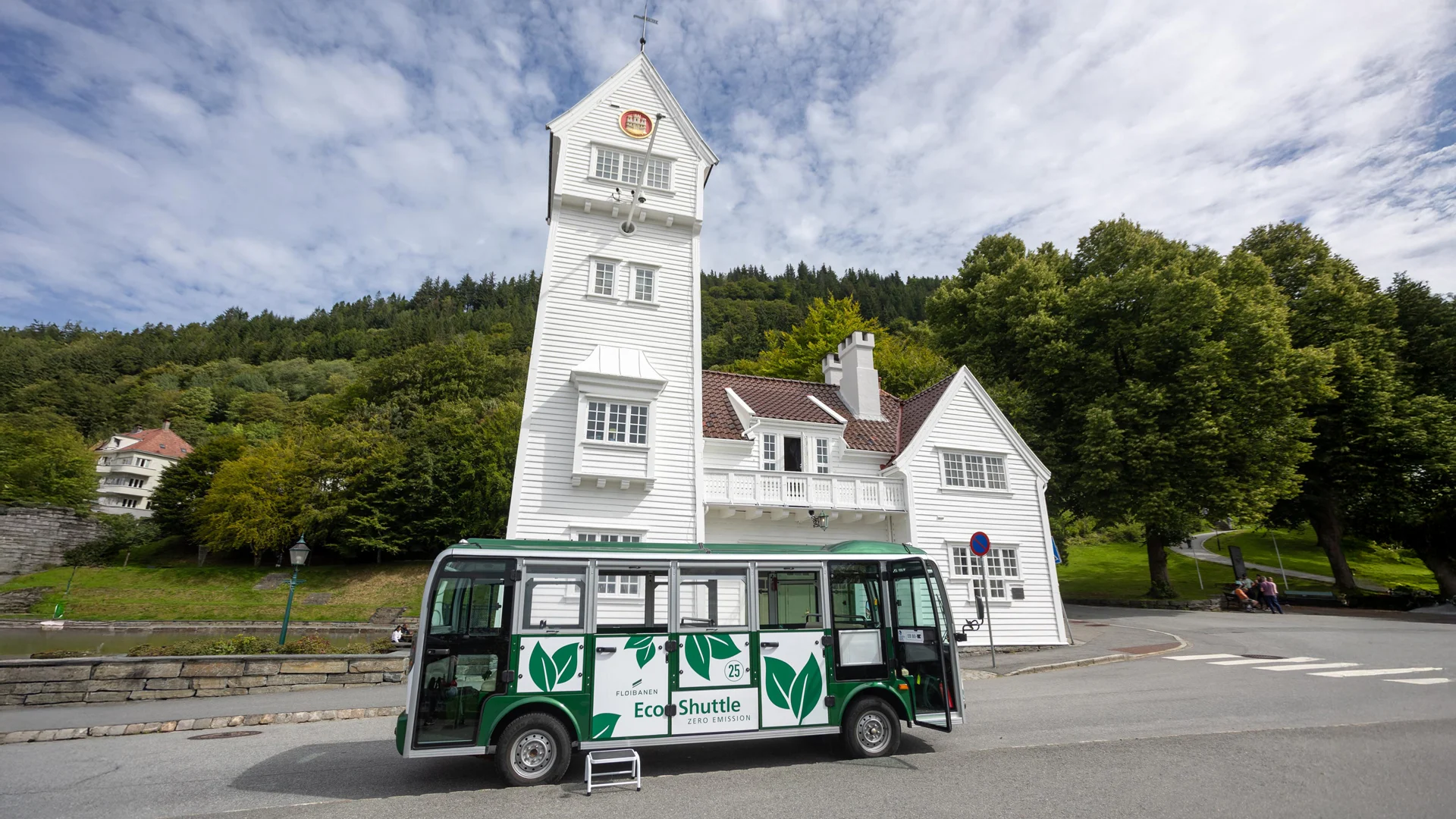
Discover Bergen by E-Bus
Bergen 3h 30min
Read more

Heritage & Highlights: The best of Bergen
Bergen 3h 30min
Read more
Select the day
The city of lighthouses
- Port: Kristiansand
- Day of voyage: 14
Details
We spend the last afternoon of our voyage in Kristiansand, Norway’s fifth-largest city, sitting along the southern tip of the country,
Kristiansand is on a mission to become the most sustainable port in Europe. Find out more about this admirable quest on an optional excursion that includes a visit to Odderøya Island.
Or delve into Kristiansand’s 20th-century military past on an optional excursion to Batterie Vara. Originally built as a German fort in World War II, it features the world’s second largest cannon ever to be mounted on land.
Back on the boat, we’ll end our voyage on a high note with an end-of-trip farewell dinner. Take this opportunity to trade photo highlights and experiences with your fellow travellers one last time.
Available excursions

Kristiansand WWII History Tour
Kristiansand 2h 30min
Read more
Available
Apr - May + Sep - Oct + Nov - Mar

Green Walking Tour of Kristiansand
Kristiansand 2h
Read more
Available
Apr - May + Nov - Mar

Norwegian Christmas at Skraastad Farm
Kristiansand 2h 30min
Read more
Available
Nov - Mar
Select the day

Back where we began
- Port: Oslo
- Day of voyage: 15
Details
From the south to the north, and back to the south, reflect on your journey as you watch our return to our first – and now last – port of the voyage, Oslo, in the early morning. Say your goodbyes to the crew and disembark the ship, marking the end of your travels with us.
You’ve sailed on The North Cape Line, getting to know Norway’s coastal cities and villages all the way to the top of the European continent. During the journey, you’ll have experienced Norway’s varied climate, seen majestic mountains and fjords, and maybe gazed up in awe at the Northern Lights once or several times.
We hope you’ll cherish each of the memories of The North Cape Line that you’ll take home with you. Come sail with us again soon, on another iconic voyage of our spectacular home: the Norwegian coast.
Available excursions

Oslo Discovery Tour – Bus Sightseeing
5h 30min
Read more
Select the day
The route
You can drag or zoom in on the map to explore the route in more detail.
Optional excursions and extensions(20)
Choose these and many more when booking your voyage online, or take your time to decide and add them later in MyBooking.

Oslo Discovery Tour – Bus Sightseeing
5h 30min
Read more

On the trail of the Vikings
Stavanger 3h
Read more
Available
all seasons

Walking tour in the old town of Stavanger
Stavanger 2h 30min
Read more
Available
all seasons

Ålesund on Foot
Ålesund 1h 30min
Read more
Available
Jun - Aug + Sep - Oct + Apr - May

Saga Islands Bus Tour to Alnes - Winter
Ålesund 3h
Read more
Available
Apr - May + Sep - Oct + Nov - Mar

Time Travel through the Coastal Town of Rørvik
Rørvik 2h
Read more
Available
Apr - May + Jun - Aug + Sep - Oct

Nærøya: The island of the Gods
Rørvik 3h
Read more
Available
Apr - May + Nov - Mar

Lofoten Scenery & Henningsvær - winter
Svolvær 2h 30min
Read more
Available
Apr - May + Sep - Oct + Nov - Mar

Winter Fishing in Lofoten
Svolvær 2h 45min
Read more
Available
Apr - May + Sep - Oct + Nov - Mar

Tromsø, The Arctic Capital
Tromsø 3h 30min
Read more
Available
all seasons

Explore Tromsø by E-bike
Tromsø 3h
Read more
Available
Apr - May + Jun - Aug + Sep - Oct

The North Cape
Honningsvåg 3h
Read more
Available
all seasons

North Cape and King Crab Experience - Winter
Honningsvåg 6h 30min
Read more
Available
Apr - May + Sep - Oct + Nov - Mar

Dog Sledding in Alta
Alta 2h 30min
Read more
Available
Nov - Mar

Visit The Magical Igloo Hotel in Alta
Alta 2h 30min
Read more
Available
Nov - Mar

Wonders of Wildlife at Polar Park
Narvik
Read more

Self-Drive Dogsled Adventure
Narvik 3h 30min
Read more
Available
Nov - Mar + Apr - May

Åndalsnes Town Walk and Romsdal Gondola
Åndalsnes 2h 30min
Read more
Available
all seasons

The Golden Train - Winter
Åndalsnes 2h 40min
Read more
Available
Sep - Oct + Nov - Mar + Apr - May

Bergen City Walk
Bergen 2h 30min
Read more
Available
all seasons

Oslo Discovery Tour – Bus Sightseeing
- Port:
- Available:
- Duration: 5h 30min
- Difficulty level:
- Price: From 174 AUD
- Booking code: CENOSL02
Practical information
Season: 01.04.2025 – 15.04.2026 (except 24-31 December 2025)
Daily at 10:00 (meeting time at least 15min prior, 09:30-09:45)
Min: 2 persons
Included: A 5.5 hour Sightseeing Tour including the City centre, Holmenkollen Ski Jump (outside view) and approximately 30 min free time, The Vigeland Sculpture Park (approximately 45-50 min guided walk), The Fram Museum and The Norwegian Museum of Cultural History (or to Kon-Tiki Museum on Mondays in October-April & selected dates), certified English-speaking Oslo guide.
Please note that this tour is not exclusive to Hurtigruten guests. If the minimum number of participants is not reached, we reserve the right to cancel the trip until six weeks before departure
Wheelchairs: This tour is not suitable for guests with limited mobility. Coaches are not wheelchair accessible, and the tour involves a fair amount of walking over uneven terrain and numerous steps, which may be difficult for guests with mobility impairments.
Start/end point: The bus stop located at Haakon VIIs gate (street) 1, next to the toy store “Sprell”. Look for a white coach reading "H.M.K. Class - Oslo Sightseeing" on the side.
About this activity
Embark on this discovery tour and explore Oslo's “must see” attractions. Feel the cosy atmosphere of the city center, admire stunning views over Oslo fjord from Holmenkollen Ski Jump, get in touch with the art of the most prolific Norwegian sculptor as you stroll through Vigeland Park encompassing more than 200 sculptures in bronze, granite and wrought iron. Then, on Bygdøy Peninsula you will enhance your Oslo experience by visiting 2 unique museums: the polar ship Fram Museum and the Norwegian Folk Museum or Kon-Tiki Museum.
Program is subject to a minimum number of participants.

On the trail of the Vikings
- Port: Stavanger
- Available: all seasons
- Duration: 3h
- Difficulty level: Level 2: Moderate - some mobility needed
- Price: From 169 AUD
- Booking code: HRS-SVG1
Best things about this excursion
Walk in the footsteps of warriors at the interactive Viking House centre
Stand on the site of one of Norway’s most significant battlegrounds
Pay a visit to a mystical stone circle
Practical information
Languages: English and German
Wheelchair accessible? No
About this activity
Our first stop is the ground-breaking Viking House, a Virtual Reality experience that recreates the exciting world of the Vikings and explores their connection with Stavanger. Through a short VR film, you’ll learn more about King Harold and the seminal Battle of Hafrsfjord – one of the most dramatic and significant events in Norway’s history, and one that resulted in the country’s unification.
From here, we’ll make our way back to reality and visit the Swords in Rock monument, which commemorates the epic battle. Unveiled in 1983, the three 10-metre-high bronze swords symbolise peace, unity, and freedom.
Our final stop will be the mysterious Domsteinene, an ancient stone circle that has baffled archaeologists, historians, and locals for more than 250 years. Theories abound as to its origin – was it a sacrificial site used by the Vikings? Or does it tell a story of directions in the sky? Perhaps you will make a breakthrough discovery during your visit.

Walking tour in the old town of Stavanger
- Port: Stavanger
- Available: all seasons
- Duration: 2h 30min
- Difficulty level: Level 2: Moderate - some mobility needed
- Price: From 122 AUD
- Booking code: HRS-SVG2
Best things about this excursion
See Old Stavanger’s sights up close on a leisurely walking tour
Visit the city’s main attractions, including Valberg Tower and Fargegaten
Admire Northern Europe’s best-preserved collection of wooden houses
Practical information
Languages: English and German
Included: Coffee/tea and a traditional Norwegian waffle
Wheelchair accessible? No
About this activity
Discover the best of Stavanger with a walking tour of its old town in the company of a local guide. Located on the west side of the harbour, the area is made up of 173 wooden buildings from the turn of the 18th century – the best-preserved collection in Northern Europe. As we stroll among the cobbled streets, our guide will tell us more about Stavanger’s industrial history.
Moving towards the market square, we’ll pause to admire the 27-metre-high Valberg Tower, a late 19th-century construction that served as permanent lodging for the watchmen of Stavanger. Next, we’ll explore Fargegaten (colourful street), a pedestrianised stretch of pastel-hued shops, restaurants, and local businesses that make up one of Stavanger’s most photographed spots.
We’ll finish with a stop at a local café to enjoy a cup of tea or coffee, and a traditional Norwegian snack – hjertevafler (heart-shaped waffle).

Ålesund on Foot
- Port: Ålesund
- Available: Jun - Aug + Sep - Oct + Apr - May
- Duration: 1h 30min
- Difficulty level: Level 2: Moderate - some mobility needed
- Price: From 122 AUD
- Booking code: HRS-AES2
Best things about this excursion
Discover the town Ålesund and learn about its fascinating history
Stroll among its colourful streets and find out why the architecture here is so striking
Explore Brosundet harbour, where fishermen still sell their catch directly from their boats
About this activity
One of the best ways to explore Ålesund is on foot, and this walking tour takes you close to the spires, turrets, and medieval-style ornaments that characterise the town.
One winter’s night in 1904, a fire raged through Ålesund, leaving 10,000 people homeless. Over the next three years, the entire town centre was rebuilt in the Art Nouveau style. Today, Ålesund is one of Norway’s most unique and beautiful towns.
We’ll stroll past colourful houses in the pedestrian zone and learn about Ålesund’s strong maritime traditions as we visit Brosundet – fishermen sell their catch directly from their boats in this pretty-as-a-picture harbour.
Excursion is subject to a minimum number of participants.

Saga Islands Bus Tour to Alnes - Winter
- Port: Ålesund
- Available: Apr - May + Sep - Oct + Nov - Mar
- Duration: 3h
- Difficulty level: Level 1: Easy - suitable for most people
- Price: From 277 AUD
- Booking code: HRS-AES3
Best things about this excursion
Explore the islands of Giske and Godøy, each with their own stories to tell
Visit a lighthouse and at 12th century marble church
Enjoy a sightseeing tour of Ålesund, with its unique Art Nouveau architecture
Practical information
Included: A drink and cake
About this activity
Drive over soaring bridges and through subsea tunnels as we visit two of the main islands in the seas surrounding Ålesund.
Our first stop is the saga island of Giske, the birthplace of the Viking chieftain Rollo. In 911 CE, Rollo invaded and founded Normandy. As the great-great-great grandfather of William the Conqueror, he also effectively sired the House of Normandy, which ruled England until 1135 CE. We’ll visit the 12th century Giske Church, which was built of white marble for one of Norway’s most powerful families (outside only).
After, we’ll drive beneath the sea to the island of Godøy, and the pretty fishing village of Alnes. Here, we’ll visit the lighthouse and pause for some coffee or tea and cake. If the weather allows us to, don’t miss the opportunity to climb the stairs inside and get a fantastic view from the top.
After this, we’ll head back to Ålesund and discover some of its many charms. This compact and pretty city is famed for its Art Nouveau architecture, and we’ll investigate some of its highlights and unique features.

Architecture & Breweries - Ålesund on Foot
- Port: Ålesund
- Available: all seasons
- Duration: 2h 15min
- Difficulty level: Level 2: Moderate - some mobility needed
- Price: From 200 AUD
- Booking code: HRS-AES4
Best things about this excursion
Stroll through Ålesund’s colourful streets and find out why the architecture here is so striking
Explore Brosundet harbour, where fishermen still sell their catch directly from their boats
Taste a selection of beer in a small, local brewery
About this activity
One of the best ways to explore Ålesund is on foot and this walking tour takes you close to the spires, turrets and medieval-style ornaments that characterise the town.
One winter’s night in 1904, a fire raged through Ålesund, leaving 10,000 people homeless. Over the next three years, the entire town centre was rebuilt in the Art Nouveau style. Today, Ålesund is one of Norway’s most unique and beautiful towns.
We’ll stroll past colourful houses in the pedestrian zone and learn about Ålesund’s strong maritime traditions as we visit Brosundet – fishermen sell their catch directly from their boats in this pretty-as-a-picture harbour.
Before we head back to the ship, we’ll finish the tour at a local brewery where we’ll sample a selection of beer from the area. You’ll soon understand why small, local breweries are so popular in Norway!
Excursion is subject to a minimum number of participants.

Time Travel through the Coastal Town of Rørvik
- Port: Rørvik
- Available: Apr - May + Jun - Aug + Sep - Oct
- Duration: 2h
- Difficulty level: Level 2: Moderate - some mobility needed
- Price: From 122 AUD
- Booking code: HRS-RVK1
Best things about this excursion
Take a guided tour into the history and heritage of Rørvik
Visit three unique museums: Kystmusset Norveg, Berggården, and Telemuseet
Gain a new perspective of aquaculture through an interactive exhibition on salmon farming
See archaeological artefacts and learn about the fascinating history of local shipwrecks
About this activity
A guide will meet you on the pier before we begin our immersive town walk and museum tour.
Rørvik's history starts after the ice has melted from the Ice Age, when small settlements were established in the area. On our tour, we’ll visit the Stone Age, Bronze Age, Iron Age, Viking Age, Middle Ages, and more recent times.
Each time period has its own distinctive character, but all are united by an enduring maritime heritage. One interesting part of this tour is the story of Hurtigruten ship St. Svitun that was wrecked on Folla, the open stretch of sea right outside of Rørvik.
We’ll first visit the Norveg Coastal Museum, which resembles the famous Sydney Opera House in how it draws architectural inspiration from the waves of the sea. We’ll explore the new aquaculture exhibition, which offers insights into the incredible story of modern-day Norwegian salmon production, and perhaps even a glimpse into its future.
We’ll then make our way to Berggården where you’ll see a shop display from 1888 and walk in historic living rooms from 1878. Our final stop is Telemuseet, which exhibits telephone sets through the ages, along with other historic technology. Here, you’ll learn about Rørvik Coast Radio Station which used to be a vital source of information for the locals.
Rørvik’s history starts after the ice has melted from the Ice Age, when small settlements were established in the area. On our tour, we’ll visit the Stone Age, Bronze Age, Iron Age, Viking Age, and Middle Ages, as well as more recent times.
Each era has its own distinctive character, but all are united by an enduring maritime heritage. One particularly interesting part of the tour is the story of St. Svitun, a Hurtigruten ship that was wrecked on Folla, the open stretch of sea right outside of Rørvik.
Excursion is subject to a minimum number of participants.

Nærøya: The island of the Gods
- Port: Rørvik
- Available: Apr - May + Nov - Mar
- Duration: 3h
- Difficulty level: Level 2: Moderate - some mobility needed
- Price: From 370 AUD
- Booking code: HRS-RVK2
Best things about this excursion
Enjoy a boat tour to this remote privately owned island
Embark on a guided visit of medieval Nærøykirka, once the heart of community life
Immerse yourself in the local history through thousands of years with the help of an expert guide
Get acquainted with some of the myths and legends of the island
Practical information
Language: English.
Included: Boat transfer, entry to church, plus mineral water, coffee, and a light snack.
Clothing: Wear comfortable waterproof shoes and clothes suitable for the weather on the day. In winter, it can be slippery in places, and it may be necessary to use spikes.
Walking information: It is a 3km roundtrip walk from the boat to the church.
Wheelchair accessible: No.
About this activity
Your guide will be waiting for you as you step off the ship. Dressed in a Viking costume, they will take you to the Coastal Museum of Norveg, from where it’s a 15-minute boat ride to the island. Named after the Norse sea god Njord, Nærøya was a powerful centre even in pre-Christian times and is often mentioned in the Icelandic sagas.
As Norway was Christianised, Nærøya continued to hold its position as a religious, political, economic, and administrative epicentre of Ytre Namdal between the 12th and 17th centuries, with Nærøykirka serving as the region’s county church and the heart of social and religious life, drawing communities together.
On this tour you will be an authentic pioneer, visiting a privately own island where a family farms the land in the company of their sheep and dogs, by the shadows of a medieval church with its stories and ghosts of past times. You’ll enjoy a guided tour of the church itself, discovering traces of those who once built it, as well as making the short walk to the baptismal fountain – another site of importance on the island, full of magic and myths from ancient times.
Excursion is subject to a minimum number of participants.

Lofoten Scenery & Henningsvær - winter
- Port: Svolvær
- Available: Apr - May + Sep - Oct + Nov - Mar
- Duration: 2h 30min
- Difficulty level: Level 1: Easy - suitable for most people
- Price: From 231 AUD
- Booking code: HRS-SVJ1
Best things about this excursion
Visit the charming fishing village of Henningsvær
Experience the art and culture of Lofoten
Explore Lofoten and learn fascinating local history
About this activity
The tour starts in Lofoten's de facto capital, Svolvær. You’ll be able to admire Svolværgeita, the 150-metre stone pinnacle of the mountain Fløyfjellet that overlooks the town. Popular with mountain climbers, this iconic mountain peak is known for its goat-like appearance, with two horns protruding from the very top.
We’ll drive past Vågan church, the largest wooden church north of Trondheim, before making our way to the fishing village of Henningsvær. We’ll drive with the sea on one side and a steep mountainside on the other. Once we’re there, see world-class art galleries, including Gallery Lofoten, which has the world’s largest collection from the 20th century, the so-called ‘Golden age of Northern Norwegian art’. After 30 minutes of driving, we’ll return to Svolvær.
Excursion is subject to a minimum number of participants.

Winter Fishing in Lofoten
- Port: Svolvær
- Available: Apr - May + Sep - Oct + Nov - Mar
- Duration: 2h 45min
- Difficulty level: Level 3: Active - good mobility needed
- Price: From 262 AUD
- Booking code: HRS-SVJ2
Best things about this excursion
Enjoy a deep-sea fishing experience aboard an authentic fishing boat
Catch your own fish and learn how to prepare your catch
Immerse yourself in the natural beauty of Lofoten
Excursion is subject to a minimum number of participants.
Practical information
Season 24/25: Only available on The North Cape Line – Oslo to Bergen sailing
Season 25/26: Available on all sailings with MS Trollfjord
No fishing experience required
Catching a fish is not guaranteed
About this activity
Cast your line and try and catch your own fish as you soak up the fresh sea air on board authentic fishing boat MS Symra, a traditional 39-foot fishing cutter with history dating back to 1917.
Under the guidance of a professional crew, you’ll use jigging reels to catch fish like pollock, haddock, and mackerel. Between February and April, it is possible to also catch skrei, Arctic cod.
No two fishing trips are the same as we make the best of the day’s conditions. Our location will depend on the weather and where the fish are likely to be.
This trip is for everyone, whether you’re experienced at fishing or not. It’s an all-around enjoyable day at sea with an opportunity to immerse yourself in nature and learn about authentic Norwegian fishing.

Kayaking in Lofoten - Winter
- Port: Svolvær
- Available: Apr - May + Sep - Oct + Nov - Mar
- Duration: 2h 30min
- Difficulty level: Level 4: Challenging - good mobility and fitness needed
- Price: From 308 AUD
- Booking code: HRS-SVJ3
Best things about this excursion
Try a new adventure sport as you learn to kayak on the Arctic Sea
Immerse yourself in the natural beauty of the Lofoten archipelago
Learn about the fascinating nature, history, and culture of Svolvær
Practical information
Kayaks, dry suits, splash cover, paddle, and life vests are provided
Due to adverse weather conditions, trips may be cancelled or postponed, but alternatives will be offered where possible
Winter kayaking is only offered to adults
About this activity
This excursion starts a short walking distance from where your ship docks in the town of Svolvær, capital of the Lofoten islands. It is tailored to those with little or no experience kayaking, but who are active and in good physical health.
After meeting your guide, you’ll begin with a safety briefing that will give you detailed instructions on the dos and don’ts of kayaking. Next, we suit up with dry suits and life vests before pairing off to board stable tandem kayaks.
After an initial warm-up to find your sea legs and get used to the action of paddling, it’s time for us to set off.
Enjoy a peaceful two-hour kayaking trip that takes in the natural beauty that the Lofoten archipelago is so famous for.
As you go, your guide will point out places of interest along the coastline and tell you more about the islands’ rich history and culture.
Excursion is subject to a minimum number of participants.

Lofoten RIB & Sea Eagle Adventure
- Port: Svolvær
- Available: Jun - Aug + Sep - Oct
- Duration: 1h 30min
- Difficulty level: Level 3: Active - good mobility needed
- Price: From 246 AUD
- Booking code: HRS-SVJ4
Best things about this excursion
Get up close with nature in a RIB
Discover scenic islands and secluded beaches that are accessible only by boat
Keep your eyes peeled for the king of the sky – the magnificent Sea Eagle
Practical information
Languages: English and Norwegian.
Clothing: A safety vest, floatation suit, and goggles are provided, but extra clothing is recommended all year round. Bring your own scarf, hat, and gloves.
Wheelchair accessible: No.
Not suitable for people who are pregnant or have back problems
About this activity
Get ready to feel the thrill of the wind in your hair as we embark on a heart-pumping ride in the waters around Lofoten. After a safety briefing, you’ll head to the RIBs to begin your adventure around this archipelago, passing islets and skerries accessible only by boat.
The area we’ll explore is home to Sea Eagles, and your chances of encountering these majestic creatures up close are high. With a wingspan of up to 2.65 metres, it is the largest bird of prey in Norway, and can carry up to double their own weight. As you scan the sky, be sure to soak up your surroundings – this vibrant landscape changes with the seasons, while a symphony of birdlife fills the air.
As we navigate these stunning waters, your skipper will share their knowledge about the region, seasoning their explanations with local stories that offer an insightful peek into everyday life in Lofoten.
Excursion is subject to a minimum number of participants.

Tromsø, The Arctic Capital
- Port: Tromsø
- Available: all seasons
- Duration: 3h 30min
- Difficulty level: Level 3: Active - good mobility needed
- Price: From 215 AUD
- Booking code: HRS-TOS1
Best things about this excursion
Get to know this cosmopolitan Arctic city through three of Tromsø’s key sights
Ride the cable car up Mount Storsteinen for spectacular views across city and sea
See the Arctic Cathedral, a daring architectural masterpiece and city landmark
Visit Polaria and learn all about life in the Arctic, from wildlife to polar research
About this activity
Due to the renovation and rebuilding of Fjellheisen (the cable car in Tromsø), Fjellheisen is not suitable for wheelchair users and guests with reduced mobility at all. There is a long flight of stairs at the top of Fjellheisen and no passenger lift available at the moment.
Over the centuries, Tromsø has been the starting point for numerous polar expeditions, served as Norway’s seat of government, and been a destination for timber transport from Russian rivers. No wonder it’s become a vibrant hub for culture, research, and education.
Your tour begins with a ride up Tromsø’s famous cable car to the top of Mount Storsteinen (1,377 ft above sea level). Get your bearings as you take in the spectacular views across the city and the fjords, mountains, and islands that surround it. Explore the plateau or have a snack while you admire the view from Fjellstua restaurant.
After, we stop at the Arctic Cathedral. Dominated by glass mosaic windows, its structure was inspired by Arctic nature.
Next is Polaria where you can watch Arctic Bearded and Harbour Seals swimming around the underwater tunnel, glimpse life in the Arctic Sea in the aquariums, and experience Arctic phenomena in the panoramic cinema. We finish our tour with some sightseeing around the island on our way back to the pier.
Excursion is subject to a minimum number of participants.

Explore Tromsø by E-bike
- Port: Tromsø
- Available: Apr - May + Jun - Aug + Sep - Oct
- Duration: 3h
- Difficulty level: Level 3: Active - good mobility needed
- Price: From 277 AUD
- Booking code: HRS-TOS3
Best things about this excursion
Let your electric bike do the hard work as you cruise around Tromsø
Pedal to the city’s best beach at Butka
Soak up the incredible landscapes, from a tranquil lake to a botanic garden
Practical information
Languages: English and Norwegian.
Clothing: A helmet and hi-vis vest will be provided. Wear comfortable walking shoes and clothing for all weather conditions.
Wheelchair accessible: No.
About this activity
Explore Tromsø like a local on this guided small-group cycling tour around the city, going off the beaten track, discovering local secrets, and enjoying the magnificent scenery along the way.
Get ready to visit sites that showcase the essence of Tromsø. From the impressive MS Polstjerna, a perfectly preserved seal-hunting vessel, to Bukta, the city's most beautiful sandy beach, each stop promises a unique experience.
Nature lovers will enjoy the visit to the birdwatching paradise of Prestvannet Lake, and learn more about unique plants at the Tromsø Arctic-Alpine Botanical Garden. The ride finishes back in downtown Tromsø, before we return to the ship.

Cross-country skiing in Tromsø
- Port: Tromsø
- Available: Nov - Mar + Apr - May
- Duration: 3h
- Difficulty level: Level 3: Active - good mobility needed
- Price: From 200 AUD
- Booking code: HRS-TOS6
Best things about this excursion
Learn the basics of cross-country skiing in a scenic and relaxed environment.
No experience needed – everybody can enjoy this easy and pleasant small- group activity.
Short transfers, no irrelevant or boring talking, active time – it’s just great fun!
Practical information
Available to book: Dec-Mar
Languages: English and German
Included: Skis, poles, ski boots, hot drink, sweet snack, guide, and transfer (5 min. each way).
Remarks/requirements: An overall good physical condition is needed to join this trip. As the weather can change quickly in Northern Norway, everyone has to wear warm clothes, wind-proof jacket/trousers, hats and mittens on the tour.
Walking information: 1–3 km. Terrain is mostly flat with a small hill (5m or less), where we practice going up and down.
Wheelchair accessible: No
About this activity
This tour is an introduction to cross-country skiing for beginners. You’ll ski on flat terrain, mostly prepared trails on the top of the Tromsøya island, a short drive from the city centre.
First, you’ll learn how to put the skis on and off and then to ski using basic techniques in a completely flat area. More techniques follow, and by the end of the tour you can challenge yourself on small hills. We ski toward the north part of the island in a scenic area with birch and spruce forests.
After skiing, take a break to sit down beside the bonfire with a hot drink and lefse. You will have some time to ask your guide more about our nature, the Arctic or just everyday life in Tromsø. The biggest risk of this trip? Afterwards you will probably start thinking about coming back here again, for longer!

Dog Sledding in Winter Wonderland
- Port: Tromsø
- Available: Apr - May + Nov - Mar
- Duration: 3h 30min
- Difficulty level: Level 3: Active - good mobility needed
- Price: From 525 AUD
- Booking code: HRS-TOS8
Best things about this excursion
Enjoy a ride on a sled pulled by huskies together with skilled mushers
Admire winter landscapes from forests and fjords to snow-covered mountains
Warm up by the fire with a hot drink and homemade cake in a traditional Gamme hut
Practical information
Included: Drinks and cake
Wear comfortable walking shoes and clothes suitable for the weather on the day, as no overalls or winter clothing are provided.
About this activity
After a scenic 40-minute bus ride from Tromsø, you’ll arrive to a warm welcome at the winter wilderness camp in Breivikeidet. The staff will greet you and introduce you to the resident friendly Alaskan huskies who each have their own names and personalities. You’ll see that the dogs are excited to meet you so feel free to give them a cuddle or three.
Your musher will then go through some safety instructions for your dog sledding experience, before hopping aboard the sleds and getting ready for your guided adventure. Sit back in the sled and enjoy the beautiful scenery of Breivikeidet valley, surrounded by steep mountains and views towards the Lyngen Alps.
After the sled ride, we’ll return to the camp to get to know more about the lives of these Alaskan huskies. Your visit is topped off with a hot drink and homemade cake next to the open fire in the traditional Gamme hut.
Excursion is subject to a minimum number of participants.

The North Cape
- Port: Honningsvåg
- Available: all seasons
- Duration: 3h
- Difficulty level: Level 1: Easy - suitable for most people
- Price: From 277 AUD
- Booking code: HRS-HVG1
Best things about this excursion
See the stunning scenery of Finnmark
Visit the northernmost point on the continent, the North Cape
Take a photo at the globe sculpture and watch a film about the area
Learn more about the history of Finnmark and the North Cape
Practical information
Embarking/disembarking port: Honningsvåg
Available: 1 Jan - 31 Dec
Transportation: Bus
Meals: N/A
Clothes: Comfortable shoes, warm and windproof clothing
About this activity
We’ll travel by bus above the 71st parallel to North Cape that rises 307 metres from the ocean, right at the top of Europe.
Gaze in awe at the stark yet beautiful scenery as you stand at continental Europe’s most northerly point, casting your eyes over the sea towards the North Pole.
In summer, you might spot herds of grazing reindeer along the nearby clifftop plateaus. In wintertime, the unspoilt white plains and snow-capped mountains will reflect the soft Arctic light.
Don’t forget the obligatory photo or that all-important selfie with the iconic globe sculpture that commemorates North Cape’s significance.
Making a stop at the visitor centre at North Cape Hall, we’ll get to watch an impressive 180° panoramic film about the region through four seasons, learn more about the area’s long history through exhibitions in the underground tunnel, and pop into the world's northernmost chapel. There’s even a small museum and a souvenir shop.
Excursion is subject to a minimum number of participants.

North Cape and King Crab Experience - Winter
- Port: Honningsvåg
- Available: Apr - May + Sep - Oct + Nov - Mar
- Duration: 6h 30min
- Difficulty level: Level 1: Easy - suitable for most people
- Price: From 432 AUD
- Booking code: HRS-HVG2
Best things about this excursion
Learn about and sample delicious King Crab from the Barents Sea in Sarnes
Stand at the edge of the cliffs and marvel at the ocean views from North Cape
Practical information
Included: King crab served with soft bread
About this activity
The tour starts and ends in Honningsvåg, the gateway to North Cape. You’ll first head to the small village of Sarnes where you can learn about and sample a local delicacy: king crab. The meal will be served the traditional way: with soft bread, mayonnaise, and a slice of lemon.
Then, the bus continues to North Cape, passing dramatic subarctic landscape along the way. Arriving at 71 degrees north, you can stand on the edge of the cliff, marvel at the stunning ocean views, and take photos by the iconic globe monument. While you’re there, make sure to visit North Cape Hall and see a movie showcasing the region throughout the seasons or pick up a souvenir at the shop.
Excursion is subject to a minimum number of participants.

Quad Biking to North Cape
- Port: Honningsvåg
- Available: Apr - May + Jun - Aug + Sep - Oct
- Duration: 4h 30min
- Difficulty level: Level 3: Active - good mobility needed
- Price: From 525 AUD
- Booking code: HRS-HVG4
Best things about this excursion
Experience the ultimate winter adventure as you drive a quad bike to or from North Cape
Visit northern Norway’s iconic North Cape in a unique and unforgettable way on this small-group tour
Learn about life in the Arctic, enjoy some of the best views around the island, and get a sense of what it’s like to be a true northerner
Practical information
Helmets, suits, gloves, and boots are provided
Total driving distance is approximately 65km
All drivers are required to present a valid driving license before the start of the tour
Each vehicle carries two guests, and there is an additional charge for single drivers
About this activity
Take in the stunning views as you drive an exciting quad bike on your way to or from the northernmost point on the European mainland, North Cape.
Once everyone is suited up and your guide has given a short safety briefing on how to drive a quad bike, you’ll take off on this scenic tour of Magerøya Island. We’ll make several stops so you can take incredible photos.
Once we reach North Cape, you’ll walk (or drive) up to North Cape globe monument for the traditional picture at northern Norway’s most famous landmark. Then, it’s time to visit North Cape Hall.
Your guide can offer you a short tour around the facilities or you can take time to discover the place on your own.
After our visit, whoever was the passenger on the ride to North Cape will swap with the driver for the ride back to Honningsvåg, with a few more photo opportunities along the way.
Excursion is subject to a minimum number of participants.

Arctic Ice Fishing
- Port: Honningsvåg
- Available: Nov - Mar
- Duration: 2h 30min
- Difficulty level: Level 3: Active - good mobility needed
- Price: From 618 AUD
- Booking code: HRS-HVG7
Best things about this excursion
Snowshoe to your off-the-beaten-track location and cut your own whole in the ice
Learn the best fishing techniques, and with luck, catch a few trout or Arctic char
Enjoy the taste of your own freshly caught fish back at the restaurant, a traditional lavvo tent
Practical information
Ice fishing involves long periods of sitting still on the ice
Snowshoes are provided
Included: A drink and the chance to taste the catch of the day
About this activity
Think fishing is only for the summer months? Not so. Even with lakes covered in a thick layer of ice, fishing is still possible.
We’ll go on a short snowshoe walk to our ice-fishing location, taking an ice drill, fishing rods, bait, warm clothes, reindeer skins to sit on, and a hot beverage to keep us warm. Plus a healthy dose of luck to catch some trout or Arctic char for dinner.
Your guide will explain how to drill a hole in the ice and teach you the best fishing techniques to encourage the fish to bite.
After spending a while on the ice, we’ll return to our restaurant in a lavvo tent to warm up by the fire and enjoy our catch of the day, prepared and cooked to perfection by the restaurant’s chefs.
Excursion is subject to a minimum number of participants.

Dog Sledding in Alta
- Port: Alta
- Available: Nov - Mar
- Duration: 2h 30min
- Difficulty level: Level 3: Active - good mobility needed
- Price: From 525 AUD
- Booking code: HRS-ALF1
Best things about this excursion
Learn all about the history, culture and day-to-day life of Alta, also known as The Northern Lights City
Enjoy an exhilarating ride through a winter wonderland on a dog sled
Eat and drink around a roaring wood fire in a Sami herdsman’s tent, known as a laavo
Get to know the sled dogs that live and work on the husky farm
Practical information
Disembarking/embarking port: Alta
Available: 15 December – 30 March
Included: Drink and snack
About this activity
As we travel by bus to the husky farm, our local guide will tell us all about life in Alta. It’s home to Europe’s longest dog sled race so there are plenty of people here who really know their stuff when it comes to dog sledding.
When we get there, we have a safety briefing then, in small groups of two or three, whizz along on a dog sled driven by a trained guide. The ride through the winter wonderland will last 20-30 minutes.
Back at the husky farm, share hot drinks, cookies and tales of our recent adventure around a crackling wood fire in a laavo, a Sami herdsman’s tent. Our hosts will tell us about their extensive experience raising and racing sled dogs and answer all our questions.
There’s be plenty of time to meet the sled dogs. Don’t forget to take a picture with them – they’re incredibly photogenic, and friendly too!
Excursion is subject to a minimum number of participants.

Visit The Magical Igloo Hotel in Alta
- Port: Alta
- Available: Nov - Mar
- Duration: 2h 30min
- Difficulty level: Level 1: Easy - suitable for most people
- Price: From 215 AUD
- Booking code: HRS-ALF5
Best things about this excursion
Tour the huge Igloo Hotel. All 21,530 sq ft (2,000 sqm) of it are crafted from snow and ice
Admire the exquisite ice and snow sculptures that decorate the hotel
Sip your free drink served in an ice glass at the unforgettable ice bar
Before you visit the Igloo Hotel, find out all about Alta, known as The Northern Lights City
Practical information
Disembarking/embarking port: Alta
Available period: 19 Sep - 30 Apr
Included: Drink
About this activity
Every winter, a crew of local artists build the Igloo Hotel on the banks of the Alta River, 12.5 miles (20km) from Alta town centre. After our local guide tells us all about day-to-day life in Alta, we’ll take a bus up the Alta Valley to Sorrisniva, home to a remarkable feat of icy architecture.
The Igloo Hotel is enormous, approximately 21,530 sq ft (2,000 sqm), and every part is made from snow and ice – even the beds! There are 30 bedrooms, plus suites, a bar, and several lounges.
Local artists decorate the hotel with exquisite ice sculptures, and the theme changes every year. The hotel’s history and the skill that goes into crafting it are just as fascinating as the hotel itself.
Before you leave, stop by the small souvenir shop and sip your free drink at the ice bar – served in a glass of ice, of course!
Excursion is subject to a minimum number of participants.

UNESCO Rock Art & Northern Lights Cathedral
- Port: Alta
- Available: Apr - May + Sep - Oct + Nov - Mar
- Duration: 3h
- Difficulty level: Level 1: Easy - suitable for most people
- Price: From 262 AUD
- Booking code: HRS-ALF6
Best things about this excursion
Take in the exhibition at Alta Museum about nearby discoveries of prehistoric rock art – the largest collection in Northern Europe
Get to know more about the history of Alta and enjoy views of Altafjord
Visit the landmark new Alta Cathedral, also known as the Northern Lights Cathedral
Understand the history and science of the Northern Lights through a fun and immersive exhibition and a unique presentation
About this activity
We’ll meet our local guide and bus and begin a short tour of Alta city centre, covering day-to-day life in the city considered the northernmost in the world.
Our first stop is Alta Museum which chronicles the discovery of Northern Europe’s largest concentration of prehistoric rock art at the head of nearby Altafjord, a UNESCO World Heritage Site. The museum is located next to the excavation site at Hjemmeluft and features some of the rock art on display, including ‘Pippi’, the first rock carving found in Alta. You can also walk through other exhibits about the Sámi, Kven history, the local slate industry, Alta River, and UNESCO.
Next up is the remarkable Alta Cathedral. The spiral of its titanium-clad spire symbolises the extraordinary phenomena of the Northern Lights. During the long Arctic nights, the striking façade even reflects the Northern Lights as they flicker all around. Downstairs, the interactive Borealis Alta exhibition tells us everything there is to know about the science and the Sámi myths behind the Northern Lights.

Wonders of Wildlife at Polar Park
- Port: Narvik
- Available:
- Duration:
- Difficulty level: Level 3: Active - good mobility needed
- Price: From 356 AUD
- Booking code: HRS-NVK1
Best things about this excursion
See Norway’s apex predators such as bears, wolves, wolverine and lynx
Enjoy a guided tour with an expert on Arctic wildlife
Learn about the delicate web of life in this region, and watch the animals roam in their natural surroundings
Witness other animals such as reindeer, moose, musk ox, red deer and Arctic foxes
Practical information
Tour offered in English and Norwegian
Warm clothing
Sensible footwear. Park can be slippery in winter – spikes recommended
Walk around the park is 3km and takes approx. 1.5 hours on average
Not wheelchair accessible
Toilets available in the park café
Available: 15 Feb – early May
Transportation: Bus
About this activity
Come on a fascinating journey to Polar Park, the world’s northernmost wildlife park. This carefully curated experience brings you closer to some of Norway’s most iconic creatures, including bears, lynx and wolverines as they roam freely within large natural enclosures.
Your journey begins with a scenic transfer from Narvik, offering breathtaking views of the Norwegian wilderness. At Polar Park, an expert guide will take you on an informative tour, providing fascinating stories and explaining the behaviours of the majestic animals you’ll see. Capture the wildlife on your camera, all set against the stunning backdrop of Norway’s untamed beauty.
The experience at Polar Park is both educational and enchanting, allowing you to connect with nature and understand the importance of preserving these magnificent creatures and their habitats.

Self-Drive Dogsled Adventure
- Port: Narvik
- Available: Nov - Mar + Apr - May
- Duration: 3h 30min
- Difficulty level: Level 4: Challenging - good mobility and fitness needed
- Price: From 606 AUD
- Booking code: HRS-NVK3
Best things about this excursion
Breathe pure air and feel deep peace in the wintry Gratangen forest
Learn how to handle a team of huskies as you glide across the snow
Meet the happy and well-looked-after family dogs
Enjoy true Sámi hospitality in a traditional heated lavvo tent
Practical information
Tour is provided in English and Norwegian
Bring plenty of warm clothing
Short walk between bus, lavvo and dogs
Not wheelchair accessible
Available: December 15 – April 30
Transportation: Bus (bus shared with Sámi Cultural Experience)
About this activity
The polar winter is truly special. The air is often quiet and crisp, and the trees are draped in shimmering ice crystals, and nature is in a peaceful, dormant state. This serene environment provides the perfect backdrop for your dog sledding adventure, but make sure to wrap up warm and wear several layers.
After a transfer from Narvik to Husky Isogaisa, the fun begins with getting to know the dogs and equipment. You'll learn how to mush a dog sled, guided by an experienced tour leader with her own team of dogs. Once you're familiar with the basics, you'll pair up and drive your own team of 4-6 dogs through the stunning, magical terrain. The dogs love running and will enjoy the ride just as much as you will!
After your journey through this winter paradise, which lasts up to an hour, you'll be welcomed into a heated Sámi lavvo. Here, you can keep warm with hot drinks and snacks, sharing stories together. This is more than just a tour, it's an encounter with nature that you'll never forget.

Sámi Cultural Encounter
- Port: Narvik
- Available:
- Duration: 3h 30min
- Difficulty level: Level 1: Easy - suitable for most people
- Price: From 284 AUD
- Booking code: HRS-NVK4
Best things about this excursion
Meet a Sámi family and learn about how their ancient culture has adapted to the modern world
Learn about spiritual beliefs from a shaman, and witness a traditional ceremony
Listen to unique Sámi joik songs and stories in a cosy lavvo setting
Discover the central importance of living with nature to these semi-nomadic people
Practical information
Tour is provided in English and Norwegian
Bring warm clothing and boots for walking on snow
Short walk between bus and lavvo
Not wheelchair accessible
Available: September - May
Meals: Tea/coffee and snacks
About this activity
Welcome to Husky Isogaisa, where the spirit of the Sámi people comes to life.
Learn about the rich history, culture, and traditions of the Sámi people from a shaman. He will share captivating stories about the Sámi way of life, including their unique joik songs, their language, and their time-honoured practice of reindeer herding (though note there are no reindeers on site). Discover how the these traditionally nomadic people have adapted to modern society while preserving their way of life.
In the cosy warmth of the lavvo tent, watch in an atmosphere of quiet reverence as the shaman connects with the Sámi spirits that dwell there and in the surrounding nature. He'll explain the significance of the Northern Lights in their beliefs – and with luck the experience may be accompanied by the magical glow of the aurora borealis.
As you listen, enjoy a warm drink and snacks, or try a cup of chaga tea, a traditional Sámi beverage known for its healing properties. The Northern Lights have always held a special place in the Sámi understanding of the universe, and the shaman's stories will illuminate their importance in a way you've never experienced before.

Snowshoe Trek with Panoramic Views
- Port: Narvik
- Available:
- Duration:
- Difficulty level: Level 4: Challenging - good mobility and fitness needed
- Price: From 284 AUD
- Booking code: HRS-NVK5
Best things about this excursion
Enjoy a memorable experience as you traverse snowy landscapes
Benefit from an expert local guide who’ll take you to the best spots
Soak up the tranquil atmosphere and the awe-inspiring beauty of the fjords and mountains surrounding Narvik
Ride on a cable car far up above sea level
Practical information
Tour offered in English and Norwegian
Cable car ticket is included
Snowshoes provided
Wear warm winter clothing
Photo stop at Narvik Mountain Lodge
Toilets at Narvik Mountain Lodge
Not suitable for wheelchair users
All hiking on flat or downhill
If the cable car is closed an alternative route will be chosen depending on the conditions
Available: Dec 15 – April 30 depending on snow conditions
Meals: Warm drink
About this activity
Experience the winter beauty of Narvik on this guided snowshoeing tour. You’ll be led by local, experienced guides who will ensure a safe and enjoyable trip that brings you closer to nature. Your adventure starts at the Narvikfjellet cable car, ascending to 656 metres above sea level where you'll be treated to breathtaking views of the fjords and town nestled below.
With snowshoes strapped on, traverse the snowy trails enjoying the peaceful surroundings and stopping at scenic viewpoints for photo opportunities. Continue your walk to Narvik Mountain Lodge, where you'll experience a cozy retreat amidst the wilderness. Here, you’ll be able to savour a warm drink while marvelling at a panoramic vista of Narvik framed by snowy peaks and ice-blue fjords.
Finally, our snow walk ends at Base Camp Narvik, where a waiting bus will bring us back down.

Åndalsnes Town Walk and Romsdal Gondola
- Port: Åndalsnes
- Available: all seasons
- Duration: 2h 30min
- Difficulty level: Level 2: Moderate - some mobility needed
- Price: From 277 AUD
- Booking code: HRS-AND1
Best things about this excursion
Enjoy a walking tour of this quaint town, with a visit to the world’s only Train Chapel
Ride to 2,320ft (708 metres) above sea level in Norway’s first gondola built on sustainable principles
Soak up the breathtaking panoramic views across the majestic peaks of the Romsdal Mountains
Explore the top of the mountain on a guided walk and visit the mountaintop restaurant
Practical information
Languages: English and Norwegian
Wheelchair accessible: Yes, but note that the accessible route is slightly shorter on the mountain.
About this activity
Our tour starts as soon as you step on to the pier, where we’ll meet our local guide and begin our journey through the town’s key landmarks. One of the highlights is the remarkable Train Chapel, a decommissioned state railway carriage that was converted into a small chapel in 2003. This is the first of its kind Norway, if not the world.
After our walking tour, we’ll head to the Romsdal Gondola – Norway's longest and most sustainable cable car. It takes only 5 minutes for the gondola to cover the 5,510ft (1,679 metres) from fjord to the peaks of the Romsdal Mountains, but it’ll feel like we’re journeying into another world. The views along the way and from the top are spectacular.
On the mountaintop, at 2,320ft (708 metres) above sea level, we’ll scan the 360-degree views to see the unforgettable outline of Romsdalshorn (one of Norway’s most famous peaks), the pinnacle of Vengetindene, Åndalsnes town centre, and the surrounding lush valleys. It’s obvious why Åndalsnes is Norway’s mountaineering capital!
Then, we’ll explore the mountaintop on a 30-minute/1,640-ft (500-metre) guided walk and find out how the tough climate shapes the day-to-day lives of those who live here.
Before we catch the gondola back down, it’s time for a locally brewed coffee and sweet treat at Eggen Restaurant, on the mountain next to the Romsdalen Gondola station.
Combine with the Trollstigen bustour for more spectacular views.

The Golden Train - Winter
- Port: Åndalsnes
- Available: Sep - Oct + Nov - Mar + Apr - May
- Duration: 2h 40min
- Difficulty level: Level 1: Easy - suitable for most people
- Price: From 101 AUD
- Booking code: HRS-AND5
Best things about this excursion
Marvel at dramatic mountain cliffs, waterfalls and Norway’s most-photographed railway bridge
Travel one of Europe’s most scenic rail routes, as recognised by Lonely Planet
Discover the true story of how some daring Norwegians protected 50 tonnes of gold during WWII
Experience a unique blend of natural beauty and powerful history in the heart of Romsdalen
Practical information
Approximate time: 12:50 PM – 3:35 PM
Age restriction: None
Wheelchair accessibility: No, as there are some steps on to the train
Meals/refreshments on the trip: None
Recommended clothes: Dress according to the weather
Excursion can be combined with: Åndalsnes Town Walk and Romsdal Gondola
Excursion is subject to a minimum number of participants
About this activity
Travel through the dramatic beauty of Romsdalen on the Rauma Railway, named “Europe’s most scenic rail journey” by Lonely Planet. This unforgettable route features towering mountain cliffs, cascading waterfalls and emerald-green rivers, offering a front-row seat to some of Norway’s most iconic landscapes – including the Troll Wall, Verma Waterfall, and Kylling Bridge, the most-photographed railway bridge in the country.
Along the way, discover the remarkable true story behind the “Golden Train”. In April 1940, during the German invasion of Norway, the country's gold reserves were secretly transported from Oslo through this very region. A group of determined Norwegians worked together under pressure to move over 50 tonnes of gold by train, protecting it from enemy forces and preserving the nation’s wealth.
This journey blends natural wonder with powerful history, offering insight into both the land and the resilience of those who once crossed it under extraordinary circumstances.

Bergen City Walk
- Port: Bergen
- Available: all seasons
- Duration: 2h 30min
- Difficulty level: Level 3: Active - good mobility needed
- Price: From 122 AUD
- Booking code: HRS-BGO1
Best things about this excursion
Entrance to the Hanseatic Assembly House, Schøtstuene.
Includes the Hanseatic Wharf.
Old wooden house area .
Practical information
Language: English and German.
Included: Schøtstuene Assembly Rooms.
Walking information: Approx. 5km walk.
Wheelchair accessible: No.
About this activity
This tour offers an initial overview of the history and structure of the city. It takes you through the charming streets of Bergen, focusing on the downtown area surrounding the bustling harbour, the town square, the theatre, the beautiful city park with adjoining art museums, not forgetting the historic areas of Bergenhus Fortress and Bryggen. We will take a closer look at the old Hanseatic Wharf which is on the UNESCO World Heritage List. Here, we will visit the old Schøtstuene Assembly Rooms. To take a walk in Bergen is the best way to take the Bergen ambience in completely. The city centre is compact and full of attractions, and the city’s highlights and colourful history are presented to you as we walk at a leisurely pace.

Discover Bergen by E-Bus
- Port: Bergen
- Available:
- Duration: 3h 30min
- Difficulty level: Level 1: Easy - suitable for most people
- Price: From 159 AUD
- Booking code: HRS-BG02
Best things about this excursion
Discover the highlights of Bergen in a comfortable and quiet electric bus
Explore the picturesque harbour area of Bryggen, a UNESCO World Heritage Site
Enthusiastic and knowledgeable guides will show you the best of Bergen
Suitable for most guests, with only a small amount of walking
Practical information
Tour is provided in English, German and Italian
A collapsable wheelchair can be accommodated
About this activity
Immerse yourself in the charm of Bergen from the comfort of a modern electric bus on this intimate guided tour. Led by an enthusiastic and knowledgeable guide, you’ll be treated to fascinating tales and historical insights that breathe life into the scenery and architecture of the Gateway to the Fjords.
From the port, we’ll head into the centre via Nordnes, a kilometre-long peninsula that stretches into Bergen harbour. This historic neighbourhood was where merchants developed their trade in the 16th and 17th centuries, and for many years it was also the site of public executions. We then continue to Muséplassen for a short photo stop by the famous Christiestøtten statue in front of the University Museum.
From here, we’ll drive to the city’s most famous attraction – the charming, UNESCO-listed harbour district of Bryggen. This stretch of colourful wooden wharf houses was first constructed in the Middle Ages but has since been re-built several times after fires. Walking through its narrow alleyways feels like stepping back in time.

Heritage & Highlights: The best of Bergen
- Port: Bergen
- Available:
- Duration: 3h 30min
- Difficulty level: Level 2: Moderate - some mobility needed
- Price: From 302 AUD
- Booking code: HRS-BGO3
Best things about this excursion
Learn about Bergen’s rich heritage and soak up picturesque coastal scenery
Explore UNESCO-listed Bryggen Wharf and delve into the city's seafaring past
Visit the majestic Fantoft Stave Church, a striking 12th-century wooden masterpiece
Enjoy a thrilling ride on the Ulriken Cable Car, offering breathtaking panoramic views
Practical information
Food/Drinks: Not included, but guests can purchase food and drinks on Mount Ulriken
Wheelchair accessible: Yes, however Fantoft stave church is not accessible due to high thresholds
About this activity
On this tour, your guide will bring Bergen's rich heritage to life. Your adventure begins with a spectacular ascent on the Ulriken Cable Car. Reaching the highest of Bergen’s seven mountains in just five minutes, awe-inspiring fjord views await at the summit. Take in the breathtaking panoramas and capture unforgettable moments from this elevated vantage point.
Next, we'll visit the Fantoft Stave Church, a wooden masterpiece dating back to 1150. Here, your guide will explain why stave churches are considered Norway’s greatest contribution to European architecture. This beautiful example of medieval craftsmanship offers a glimpse into Norway's cultural history.
Our journey continues through the city center, passing the Music Pavilion and art museums, home to works by Edvard Munch. Finally, we explore the historic Bryggen district and the UNESCO-listed Hanseatic Wharf. As you stroll through the cobblestone alleyways, your guide will reveal the city's seafaring traditions and merchant past. You'll see Bergenhus Fortress, King Haakon’s Hall and St. Mary’s Church, the oldest building in the city, each site adding depth and context to Bergen's storied past.
This comprehensive tour offers a perfect blend of Bergen's natural beauty, historical landmarks, and cultural treasures.
Note: Please be aware that the church will stay closed if there is snow on the ground to prevent the old wooden structure from water damage. Guiding will be outside of the church in those cases.

Kristiansand WWII History Tour
- Port: Kristiansand
- Available: Apr - May + Sep - Oct + Nov - Mar
- Duration: 2h 30min
- Difficulty level: Level 1: Easy - suitable for most people
- Price: From 184 AUD
- Booking code: HRS-KRS1
Best things about this excursion
Gain insight into life and work at Batterie Vara during wartime
See the world’s second largest land-mounted cannon
Visit the “House of Horror”, and find out what happened there
Practical information
The terrain is uneven in places and there is a 50-metre incline up to the cannon
About this activity
We first take a short sightseeing tour of Kristiansand before heading over to the Kristiansand Cannon Museum. Originally built as a German fort in WWII, Batterie Vara features the world’s second largest cannon ever to be mounted on land.
In addition to the impressive cannon itself, the bunker beneath the cannon displays interesting artefacts from the time. The nearby communication bunker focuses on the human toll of the war, telling stories of people connected to Batterie Vara during WWII.
The tour continues to The Arkivet Peace and Human Rights Centre. This building served as a Gestapo regional HQ during WWII, the basement functioning as a detention and interrogation centre. The prison cells and torture chambers from 1942-1945 have been reconstructed, and installations illustrate the grim events that took place in the basement. During the guided tour, you’ll learn about the lives of both the prisoners and prison guards of the place that came to be known as The House of Horror.
Excursion is subject to a minimum number of participants.

Green Walking Tour of Kristiansand
- Port: Kristiansand
- Available: Apr - May + Nov - Mar
- Duration: 2h
- Difficulty level: Level 1: Easy - suitable for most people
- Price: From 82 AUD
- Booking code: HRS-KRS2
Best things about this excursion
Discover the sustainable sights of Kristiansund by foot
Learn about renewal energy, urban beekeeping and other sustainable initiatives
Pick up a unique souvenir at a locally run creative collective
Practical information
Language: English
Wheelchair accessible: No
About this activity
Situated on the southern coast of Norway, the port city of Kristiansand is working towards becoming one of the most environmentally friendly in Europe. Your tour starts at the pier, where you’ll be introduced to renewable energy and learn more about the clean-up projects at the harbour. From here, you’ll cross the bridge to discover historic Odderøya Island, where former military barracks have been transformed into creative artist studios that run a variety of sustainable initiatives.
As you stroll around, look out for the ceramic birdhouses nested high in the trees and the incredible Giant Crab sculpture, crafted from collected waste materials, perched atop the smart-food entrepreneur centre. We’ll also explore some of the town’s green spaces: Nupen Fountain Park, home to a number of striking granite fountains erected by a local artist, and the city garden, where you’ll gain an insight into urban beekeeping at the Insect Hotel.
The final stop is Kollektivet, a creative collective run by a community of 21 local designers. Guided by a zero-waste mantra, the shop is filled with everything from chic second-hand items to genuinely unique artisan crafts and design pieces.
Excursion is subject to a minimum number of participants.

Norwegian Christmas at Skraastad Farm
- Port: Kristiansand
- Available: Nov - Mar
- Duration: 2h 30min
- Difficulty level: Level 1: Easy - suitable for most people
- Price: From 277 AUD
- Booking code: HRS-KRS3
Best things about this excursion
Admire scenes of forests and farmsteads on a coach ride
Experience Norwegian Christmas traditions with the locals
Taste authentic traditional Norwegian Christmas dishes
Practical information
Disembarking/embarking port: Kristiansand
Available: 1 November – 30 December
Clothes: Wear comfortable walking shoes and clothes suitable for that day’s weather.
About this activity
Leaving the pier, we’ll board a coach for a short sightseeing tour of Kristiansand’s city centre. We’ll continue on through popular residential areas and along the river Otra, making our way up Torridalen valley. Take in the sights of inland woods, farmsteads, and scenic river dwellings as we go.
We’ll soon arrive at the Skraastad Farm for a traditional Christmas get-together. At this time of year, the farm will be decorated in traditional Yuletide fashion. Established in 1773, Skraastad Farm has many stories embedded in its walls.
After a warm welcome, we’ll gather together in the cosy farmhouse to learn about Norwegian Christmas traditions. Indulge yourself in storytelling, traditional music, and tastings of traditional, homemade Christmas food and drinks such as pinnekjøtt lamb ribs, salmon, and Norwegian sausage. On the way back to the pier, enjoy more of the Christmas spirit of Kristiansand’s decorations in the city centre before arriving back at the ship.
Excursion is subject to a minimum number of participants.

Oslo Discovery Tour – Bus Sightseeing
- Port:
- Available:
- Duration: 5h 30min
- Difficulty level:
- Price: From 174 AUD
- Booking code: CENOSL02
Practical information
Season: 01.04.2025 – 15.04.2026 (except 24-31 December 2025)
Daily at 10:00 (meeting time at least 15min prior, 09:30-09:45)
Min: 2 persons
Included: A 5.5 hour Sightseeing Tour including the City centre, Holmenkollen Ski Jump (outside view) and approximately 30 min free time, The Vigeland Sculpture Park (approximately 45-50 min guided walk), The Fram Museum and The Norwegian Museum of Cultural History (or to Kon-Tiki Museum on Mondays in October-April & selected dates), certified English-speaking Oslo guide.
Please note that this tour is not exclusive to Hurtigruten guests. If the minimum number of participants is not reached, we reserve the right to cancel the trip until six weeks before departure
Wheelchairs: This tour is not suitable for guests with limited mobility. Coaches are not wheelchair accessible, and the tour involves a fair amount of walking over uneven terrain and numerous steps, which may be difficult for guests with mobility impairments.
Start/end point: The bus stop located at Haakon VIIs gate (street) 1, next to the toy store “Sprell”. Look for a white coach reading "H.M.K. Class - Oslo Sightseeing" on the side.
About this activity
Embark on this discovery tour and explore Oslo's “must see” attractions. Feel the cosy atmosphere of the city center, admire stunning views over Oslo fjord from Holmenkollen Ski Jump, get in touch with the art of the most prolific Norwegian sculptor as you stroll through Vigeland Park encompassing more than 200 sculptures in bronze, granite and wrought iron. Then, on Bygdøy Peninsula you will enhance your Oslo experience by visiting 2 unique museums: the polar ship Fram Museum and the Norwegian Folk Museum or Kon-Tiki Museum.
Program is subject to a minimum number of participants.
What's included
On board, you'll enjoy outstanding food, facilities and hospitality, so you can concentrate on simply enjoying the beauty of Norway.
Daily dining at charming main restaurant Flora
Self-serve breakfast, lunch buffet & à la carte dinner with local ingredients
Unlimited selected drinks (Flora, Árran, Bar)
Selected soft drinks, beers, wines & spirits during Flora, Árran, Bar open hours
Fine dining at Røst
Daily breakfast, lunch & dinner at our award-winning fine-dining restaurant
Unlimited selected cocktails (Røst, 1893 Bar)
In addition to premium drinks, enjoy tasty cocktails during Røst, Bar open hours
Choice of cabin/suite type and location
Cabin location selection for Select/Cabin/Suite & 11+ day Signature voyages only
On-deck food tastings
Enjoy a taste of Norway with live culinary demos & tastings
MS Trollfjord
Flagship of our Signature voyages, MS Trollfjord takes its name from a small but spectacular fjord in the Vesterålen archipelago.
MS Trollfjord
Flagship of our Signature voyages, MS Trollfjord takes its name from a small but spectacular fjord in the Vesterålen archipelago.
Facilities
3 restaurants
Fine dining
1893 Bar
Free Wi-Fi
Expedition Team
Panoramic lounge
Sauna and fitness room
Meeting rooms
Laundry room
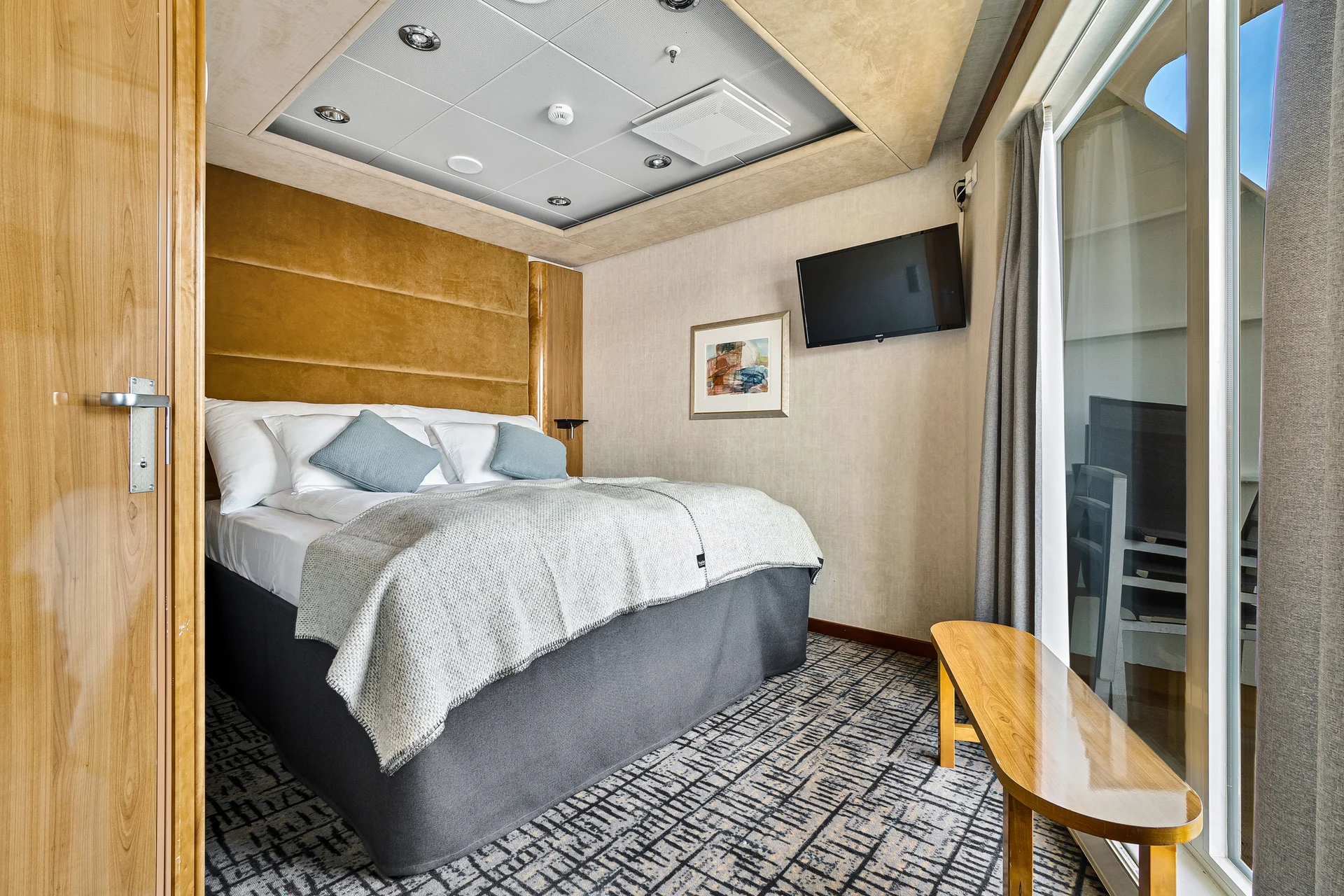
Expedition Suite
Owners' Suite on upper deck with balcony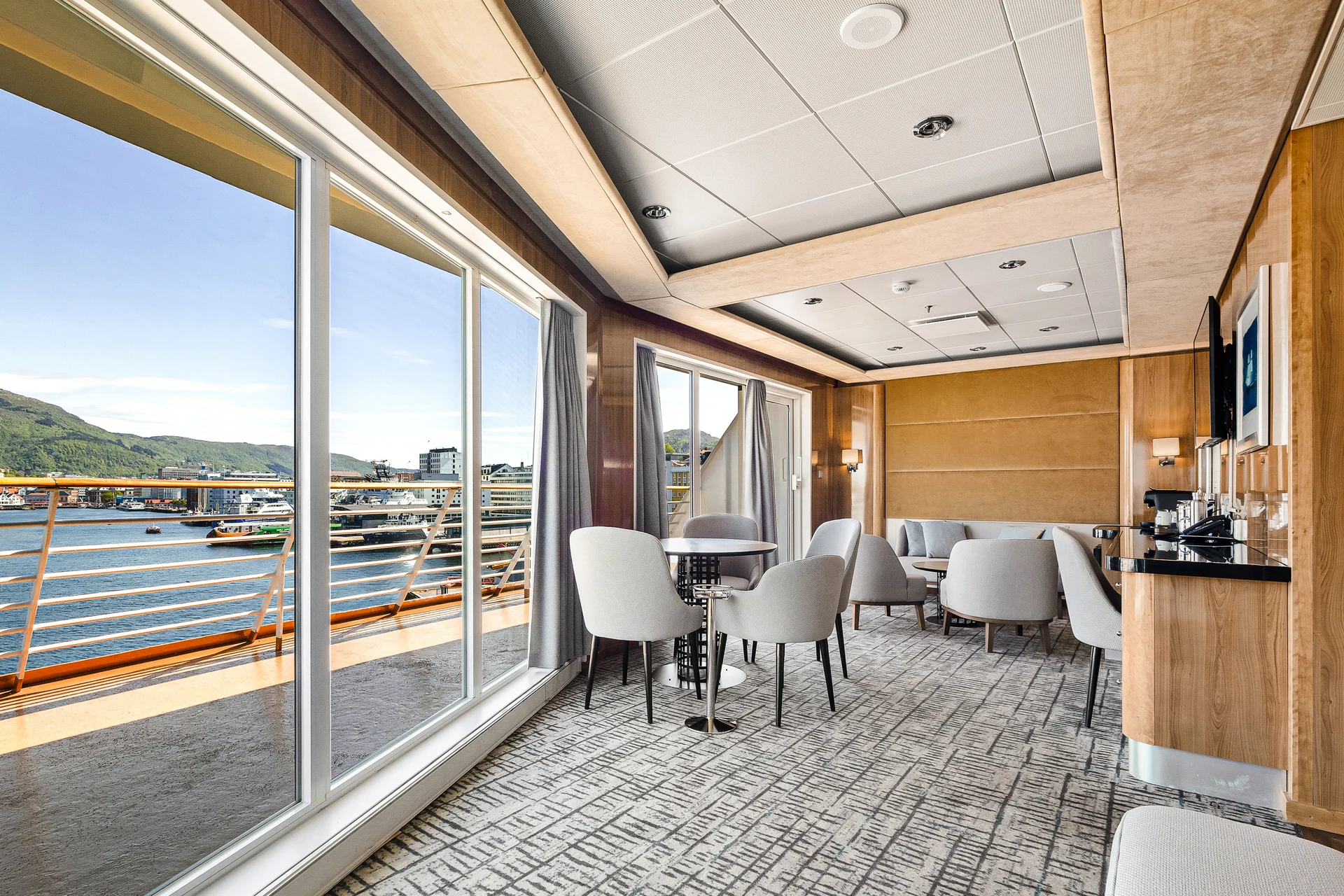
Expedition Suite
Owners' Suite on upper deck with balcony
Expedition Suite
Owners' Suite on upper deck with balcony
Expedition Suite
Owners' Suite on upper deck with balcony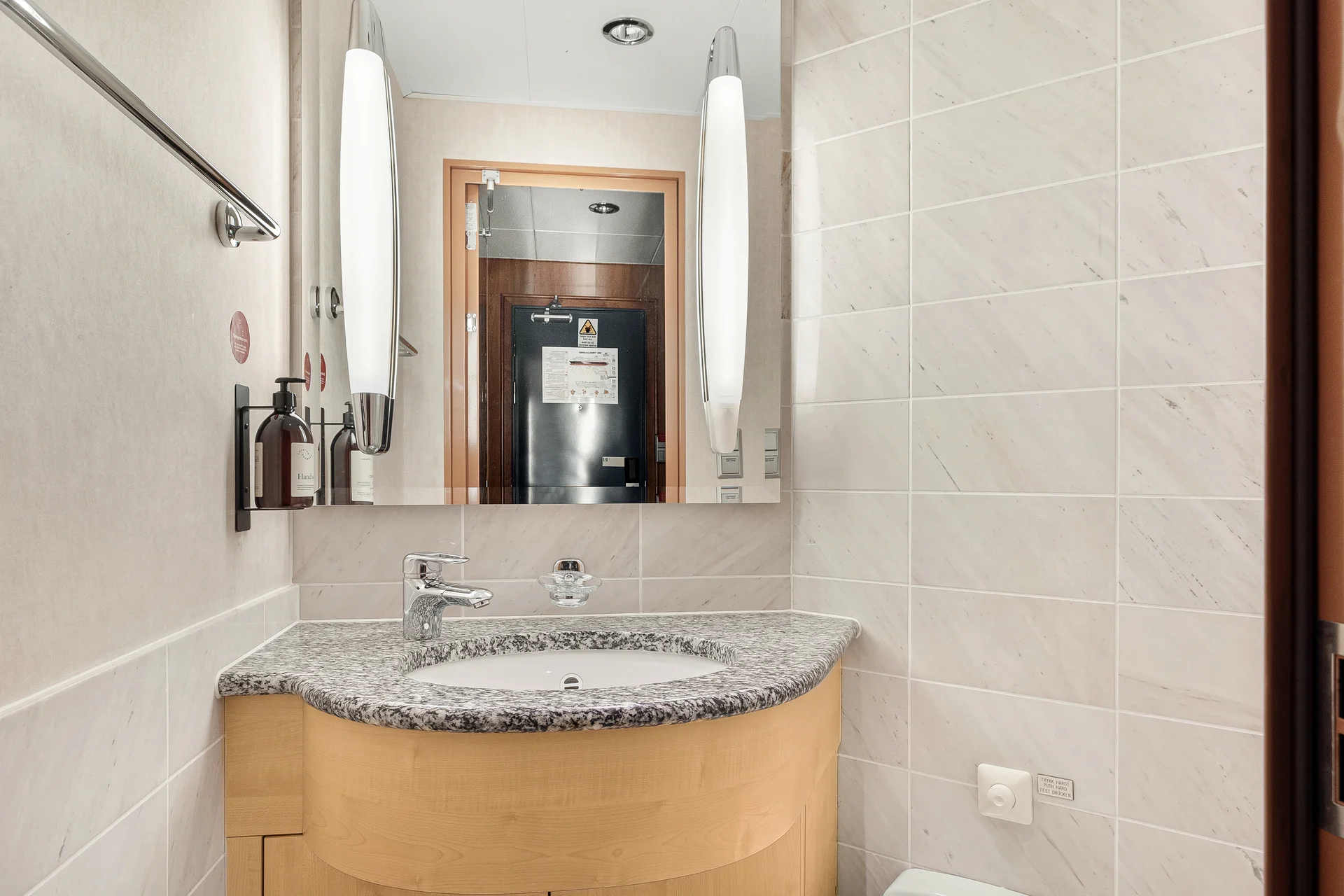
Expedition Suite
Owners' Suite on upper deck with balcony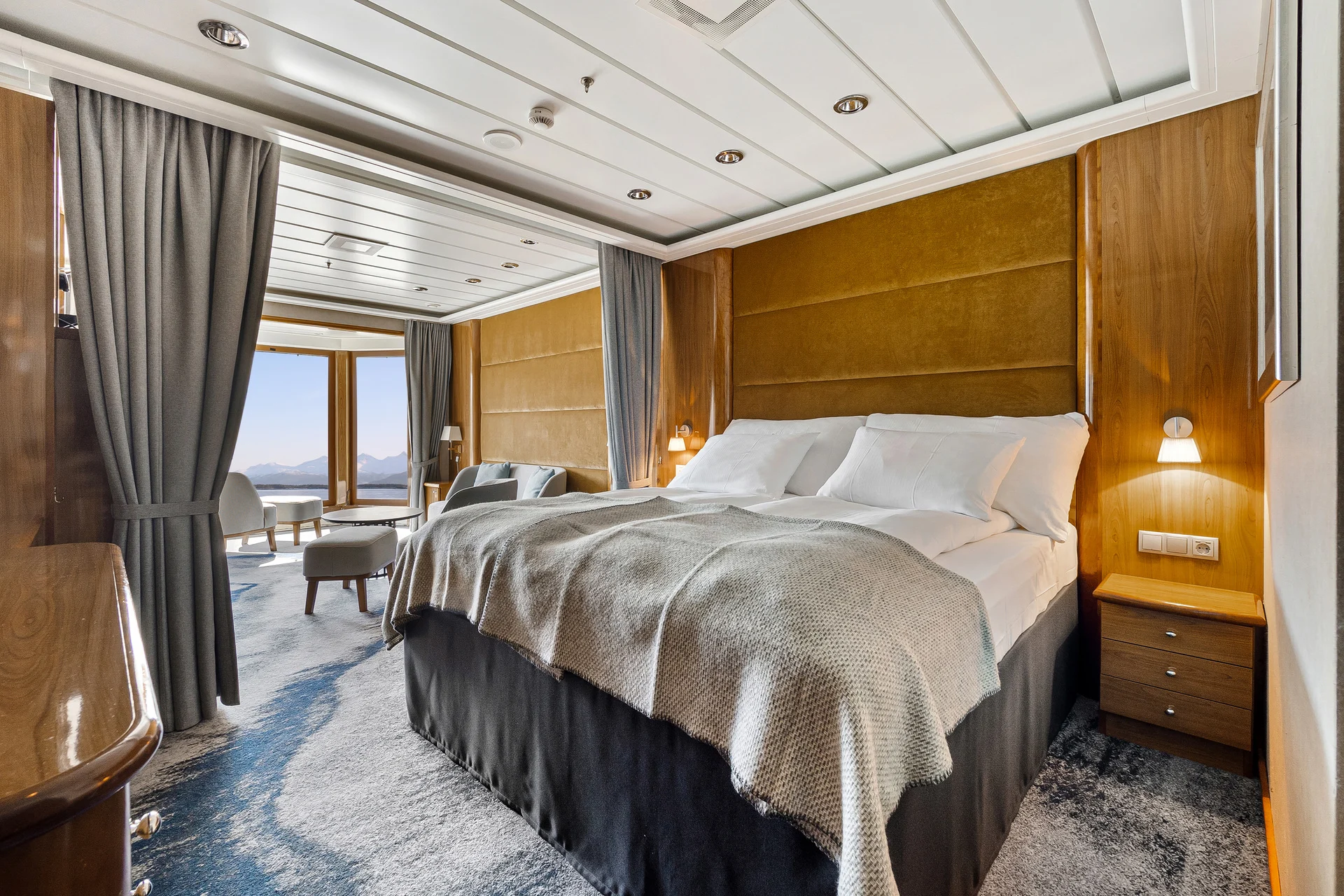
Expedition Suite
Grand Suite on middle or upper deck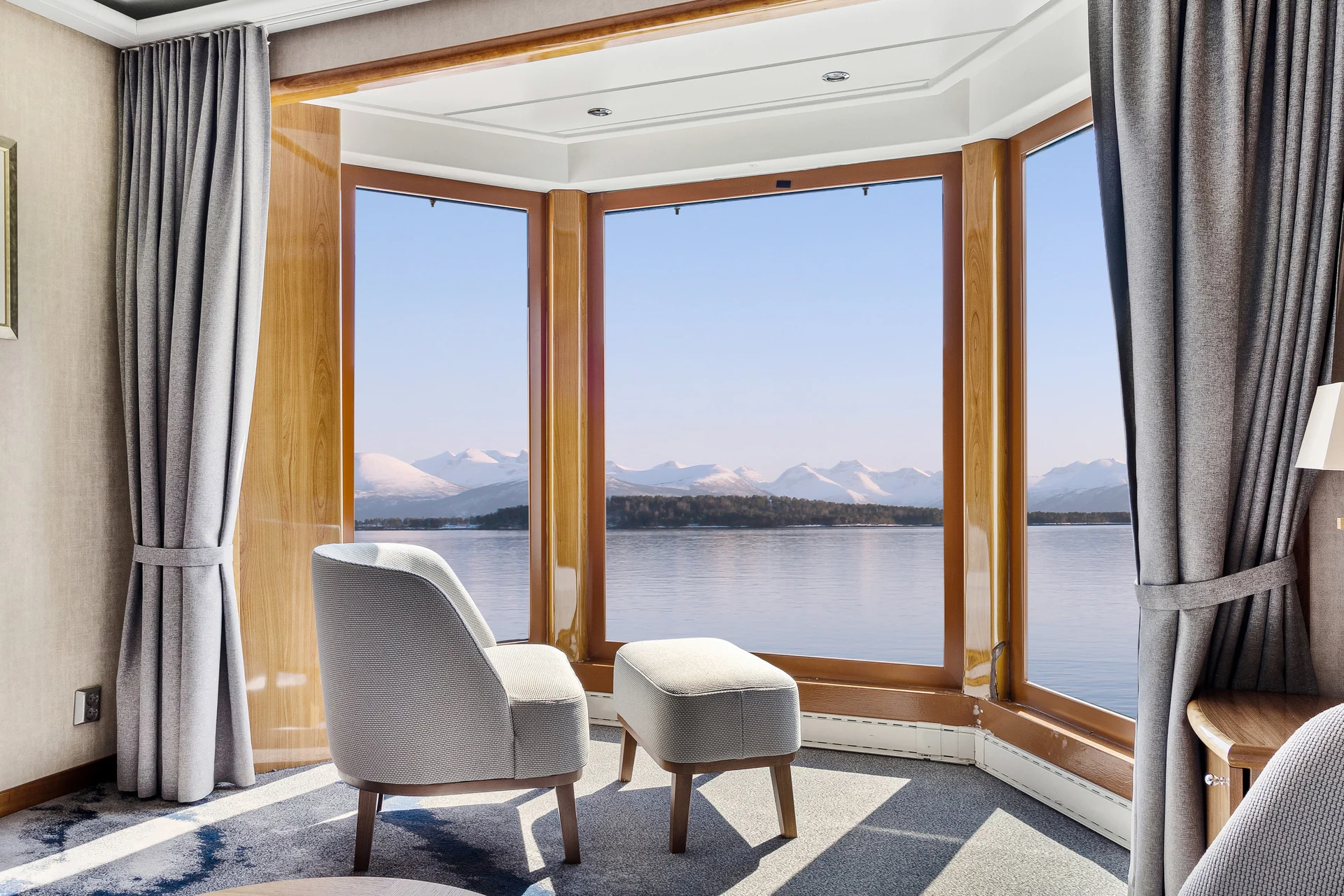
Expedition Suite
Grand Suite on middle or upper deck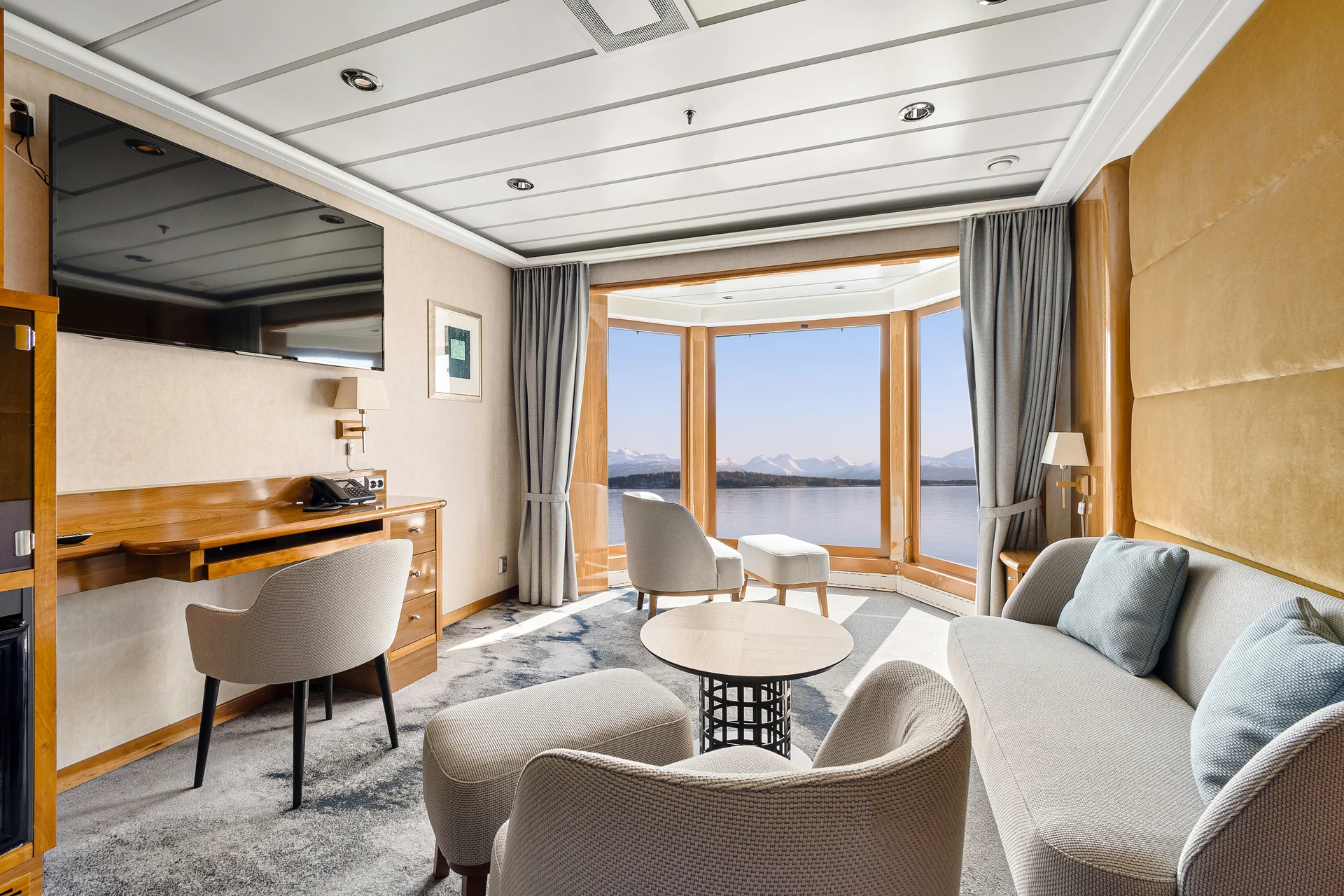
Expedition Suite
Grand Suite on middle or upper deck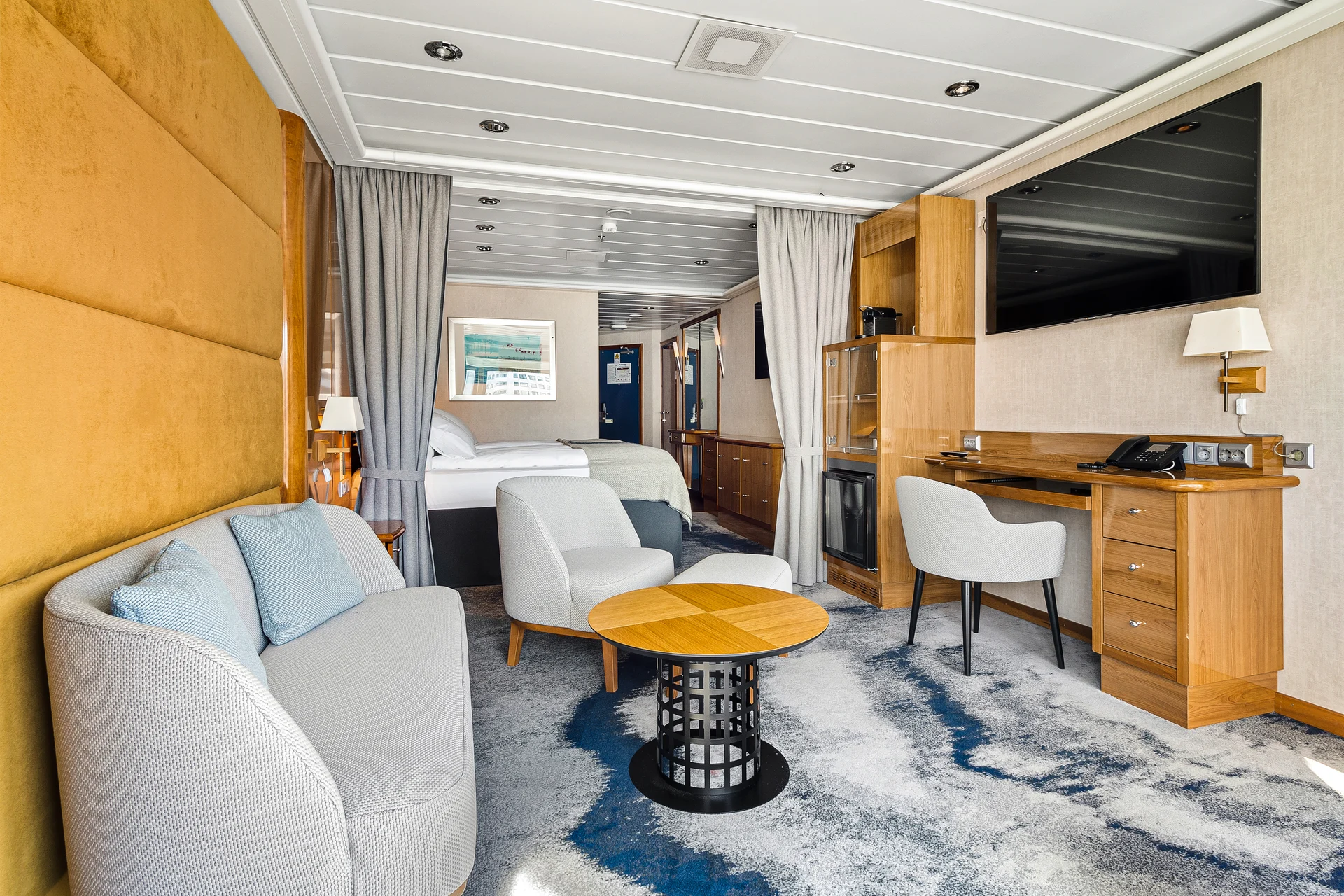
Expedition Suite
Grand Suite on middle or upper deck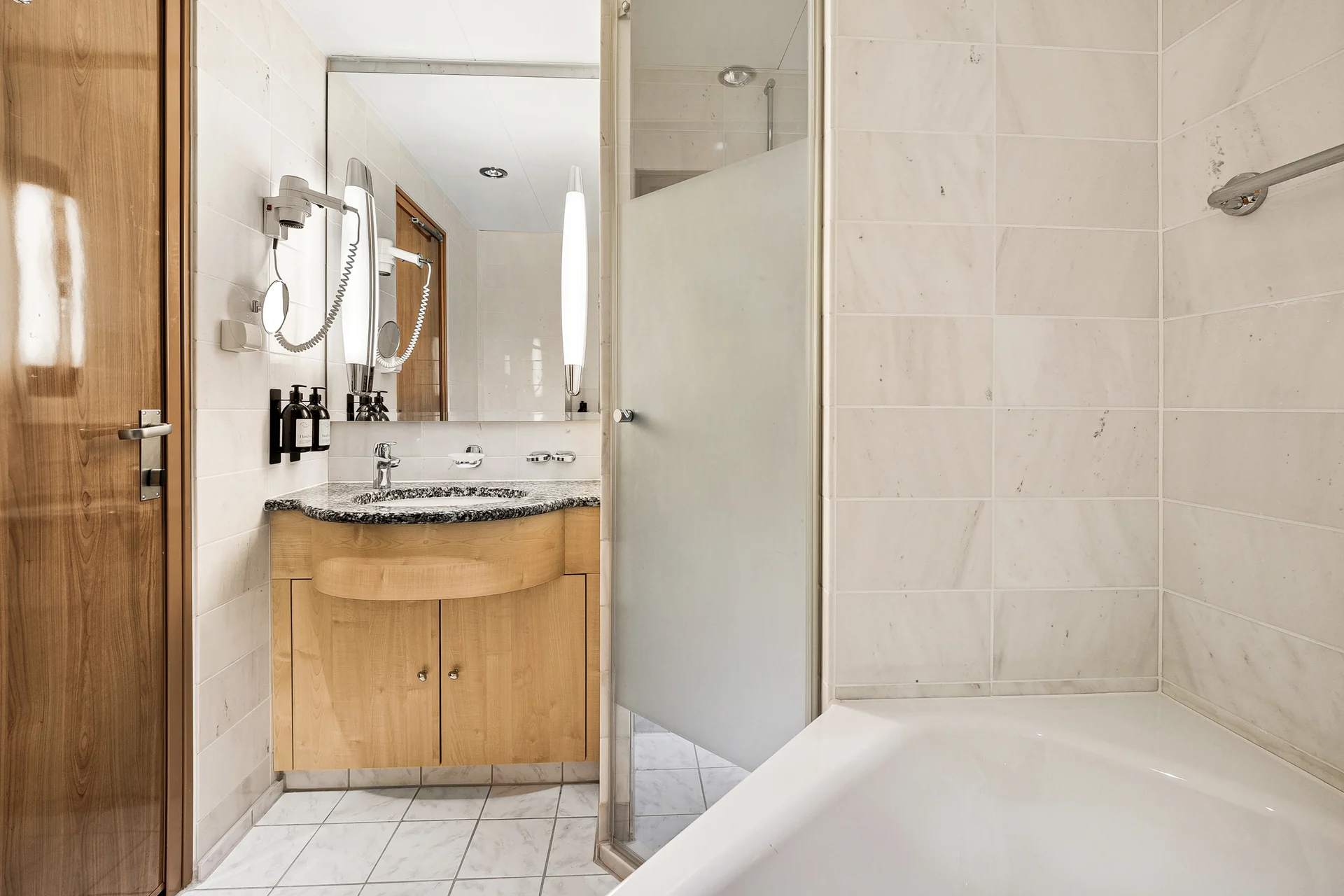
Expedition Suite
Grand Suite on middle or upper deck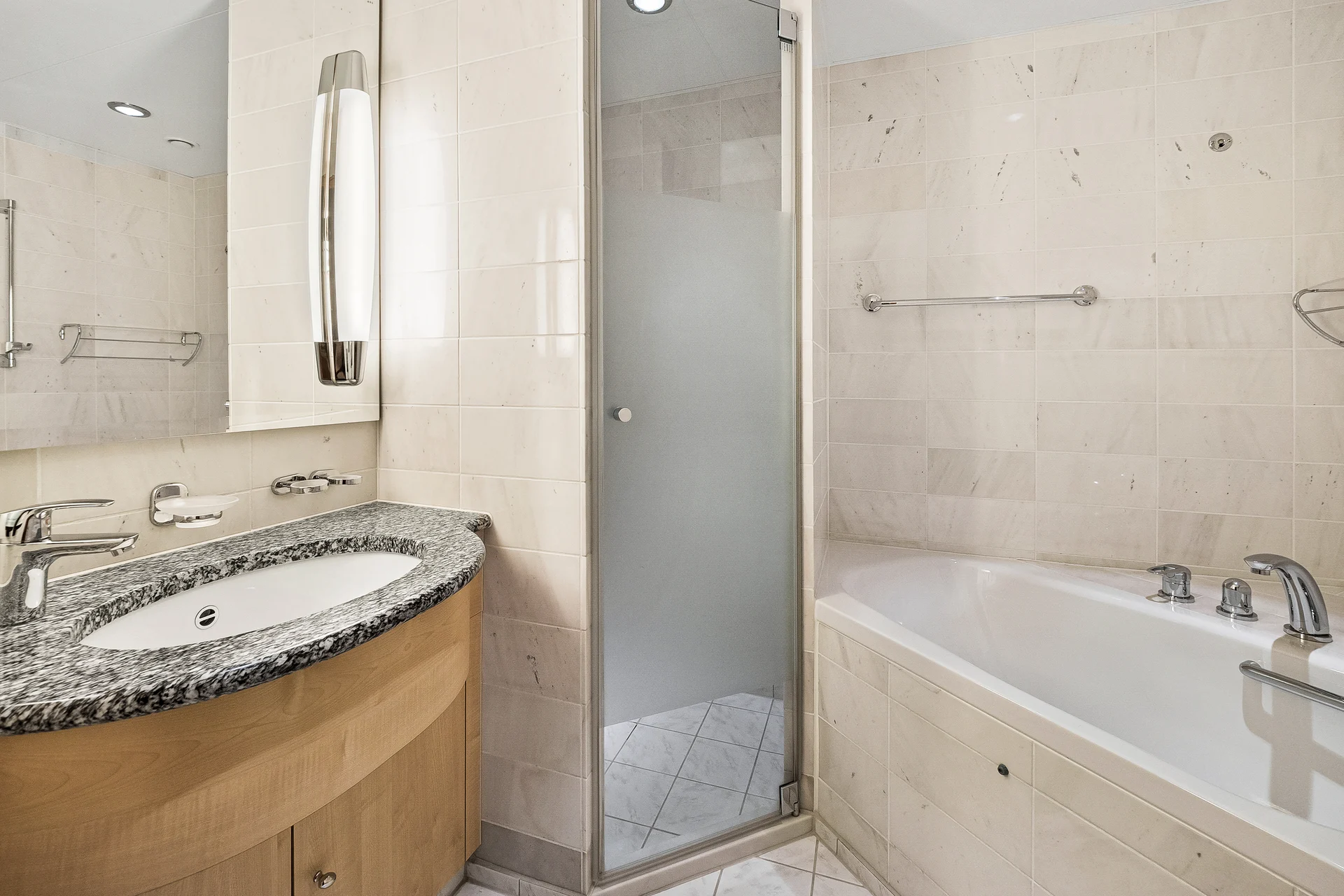
Expedition Suite
Grand Suite on middle or upper deck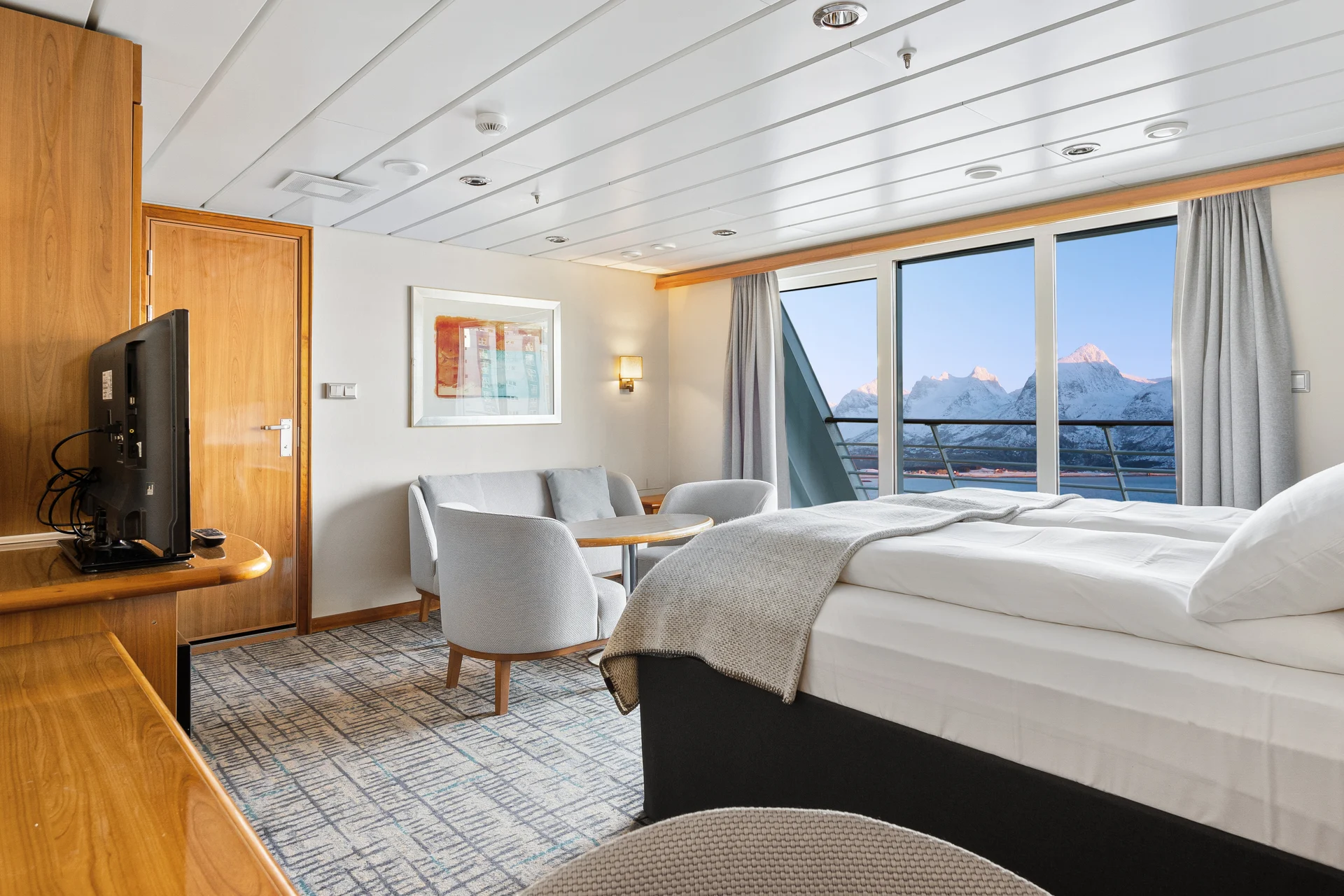
Expedition Suite
Suite on middle deck with balcony